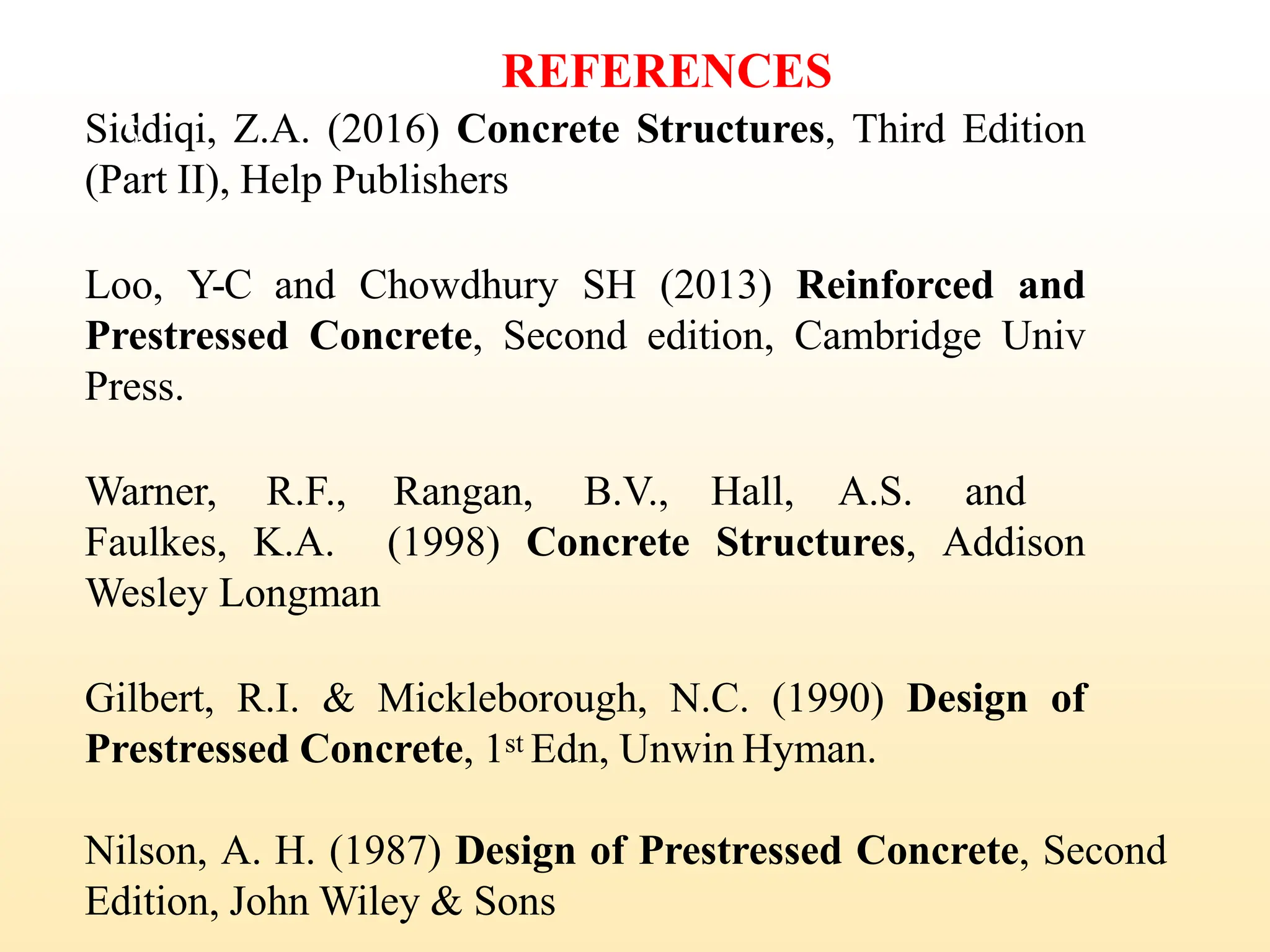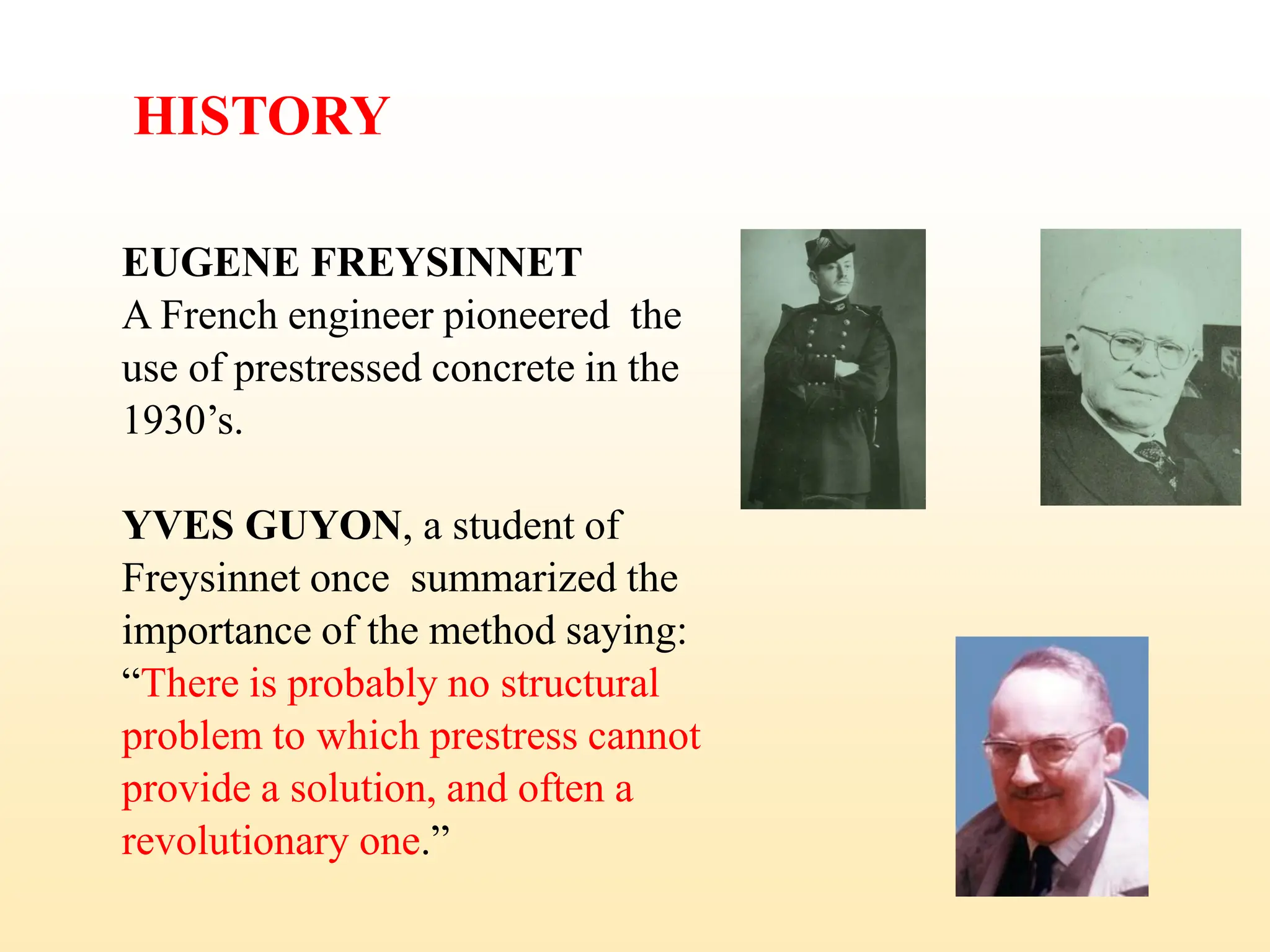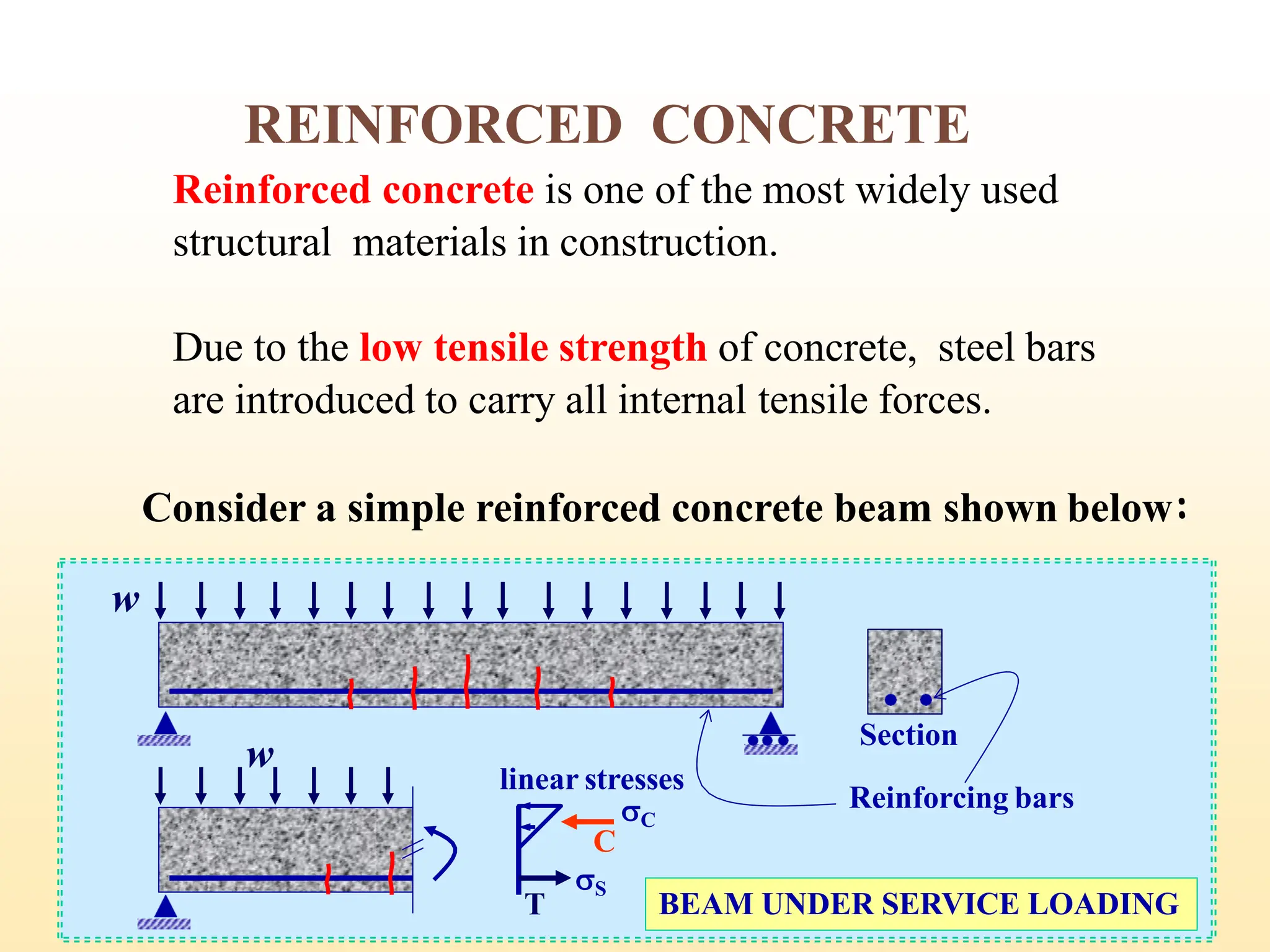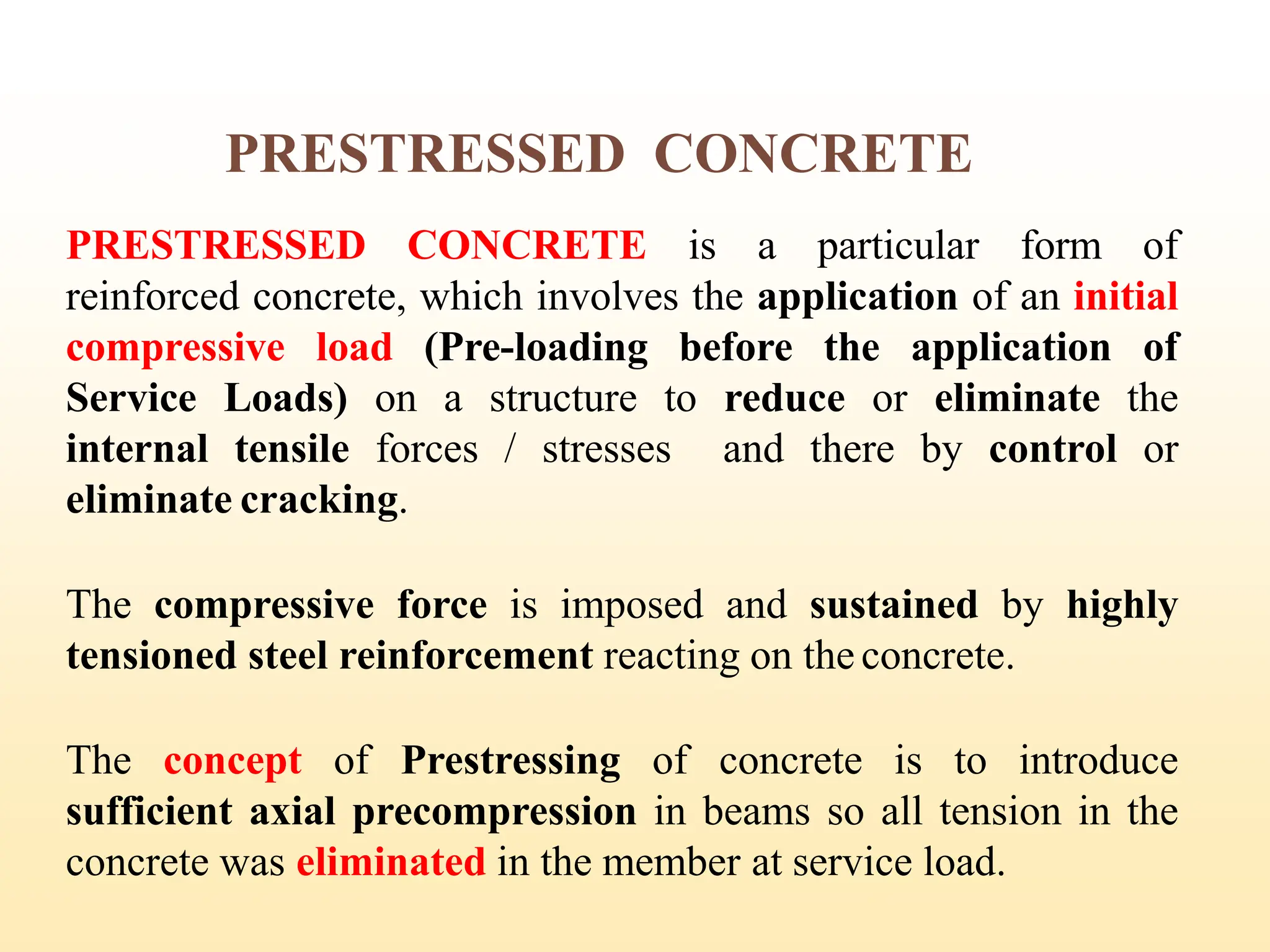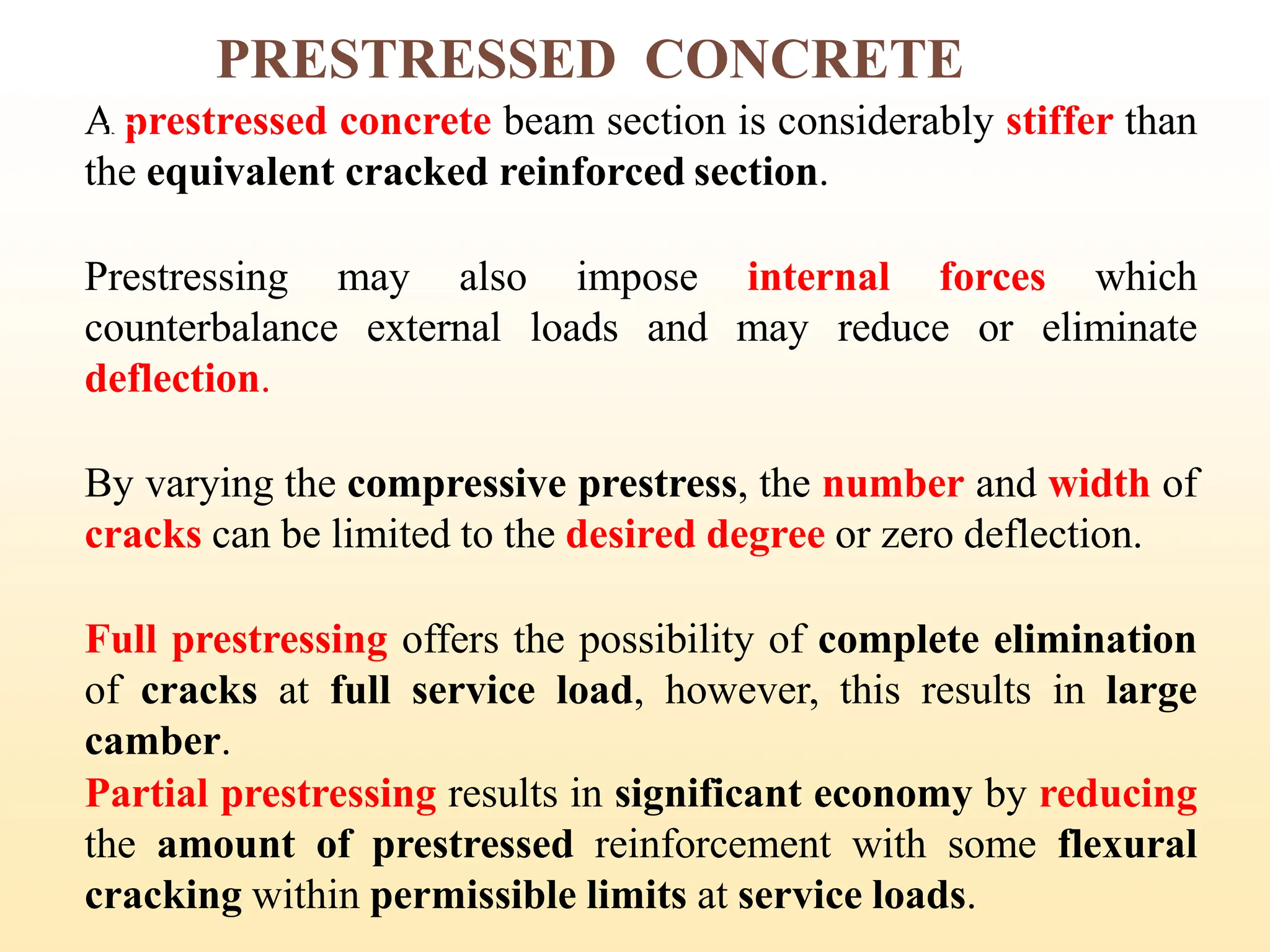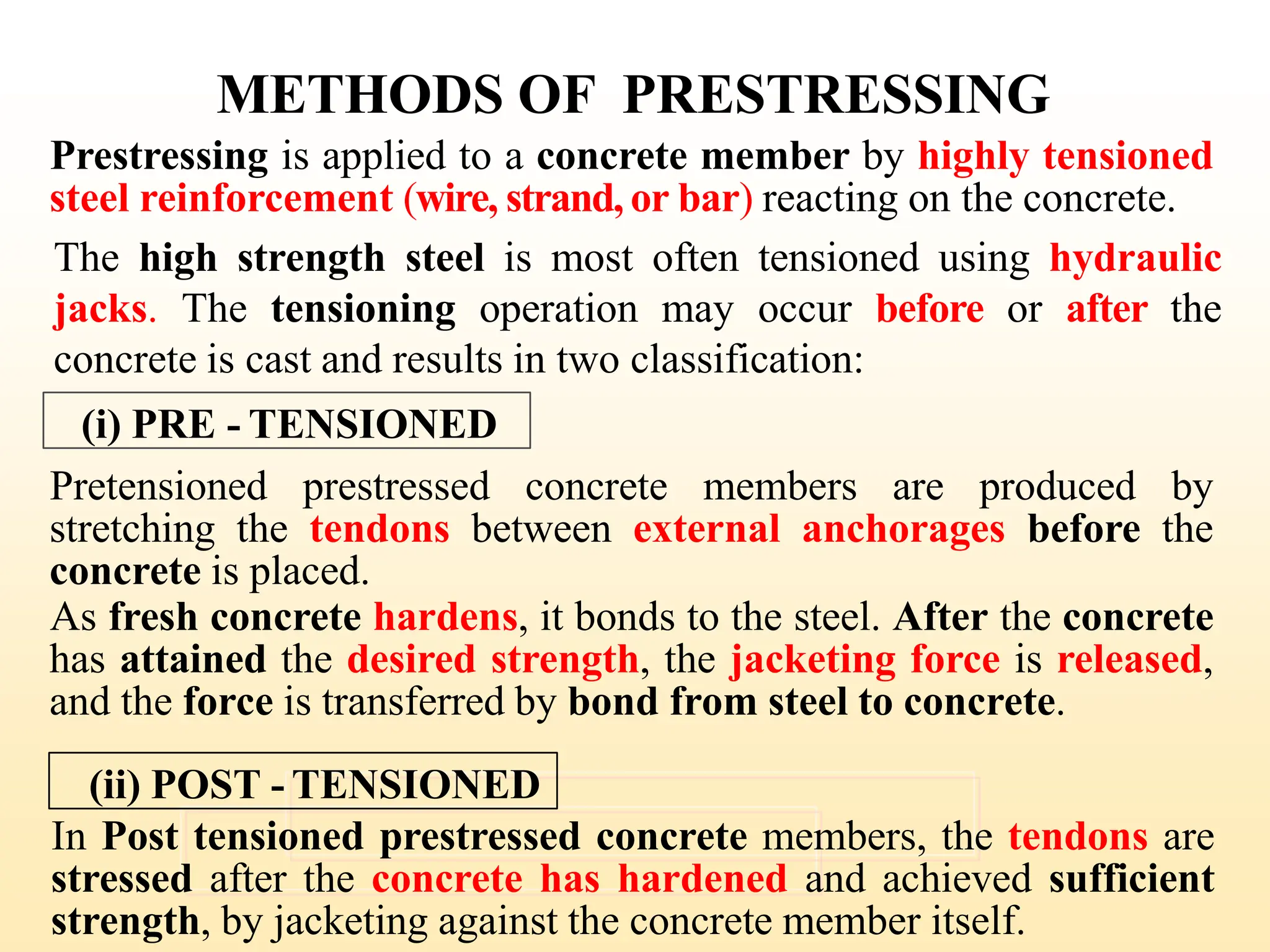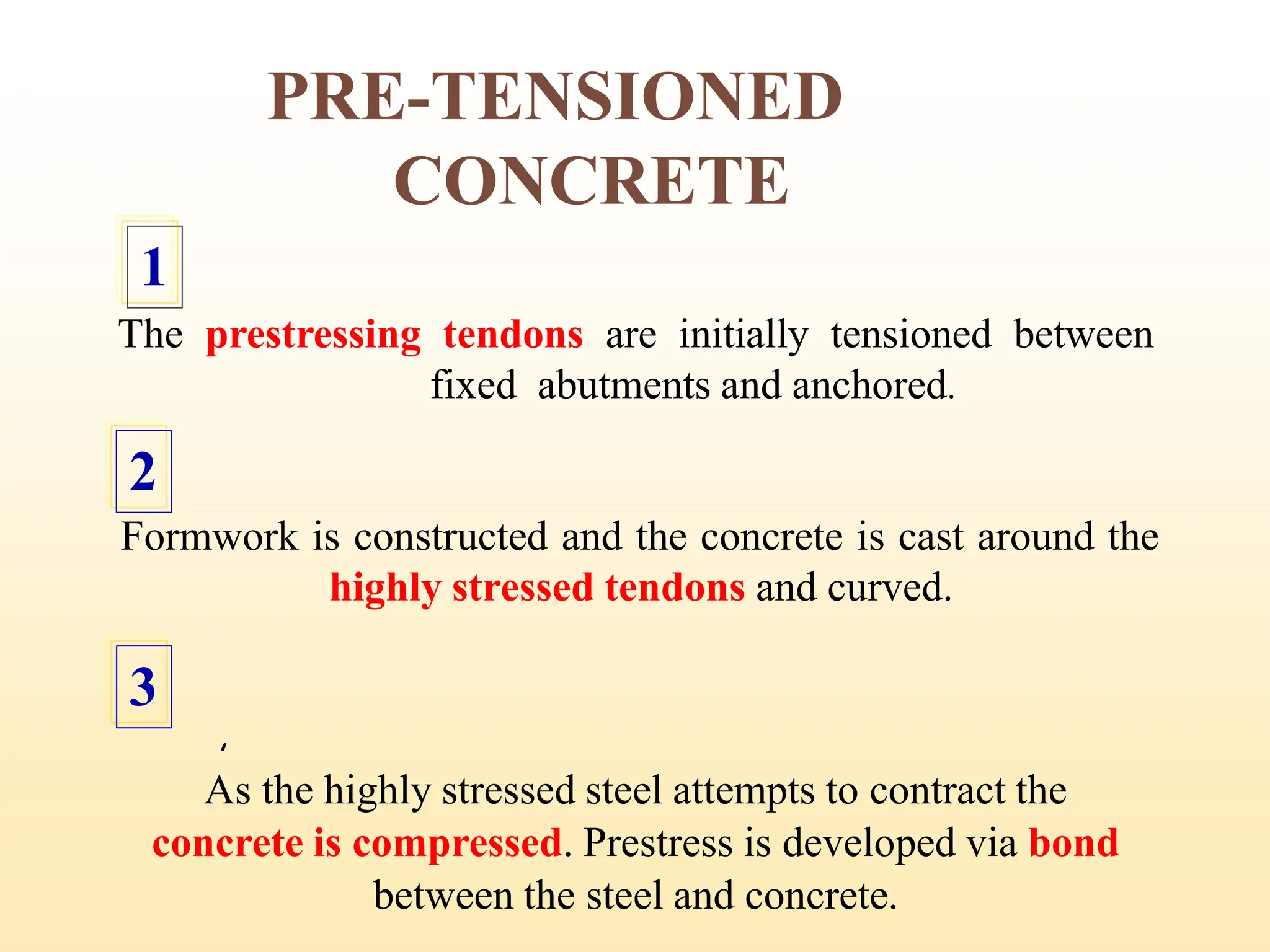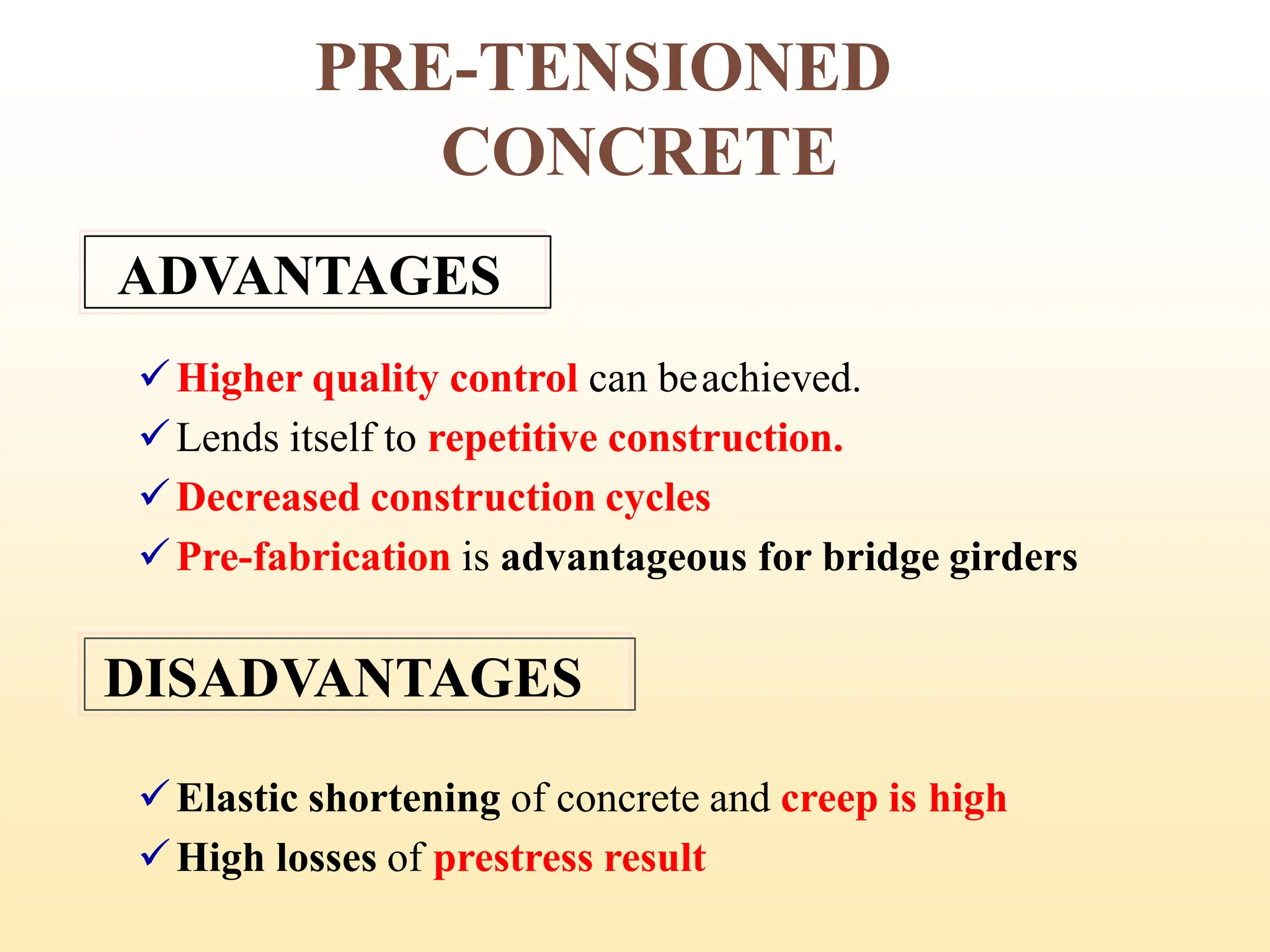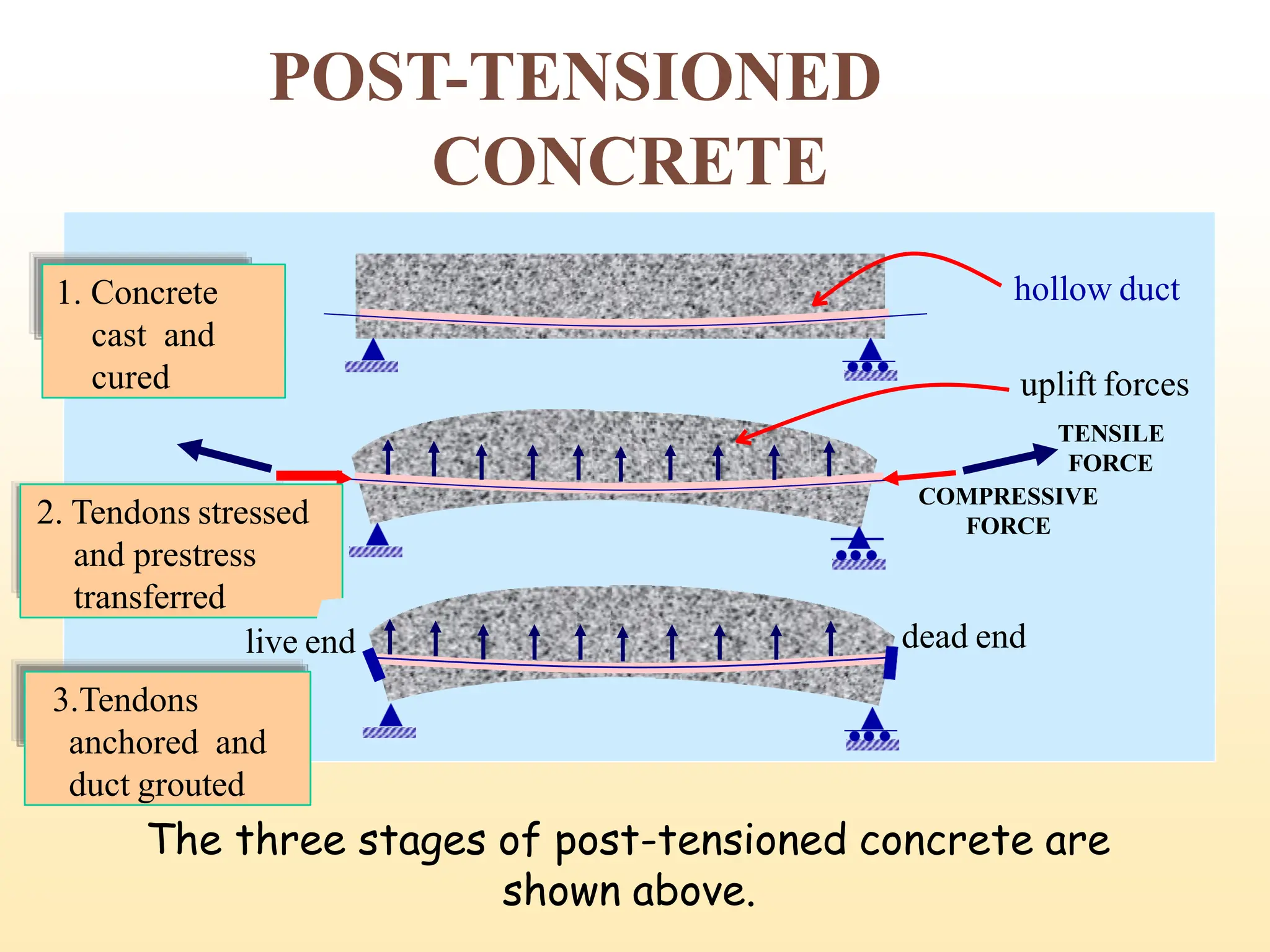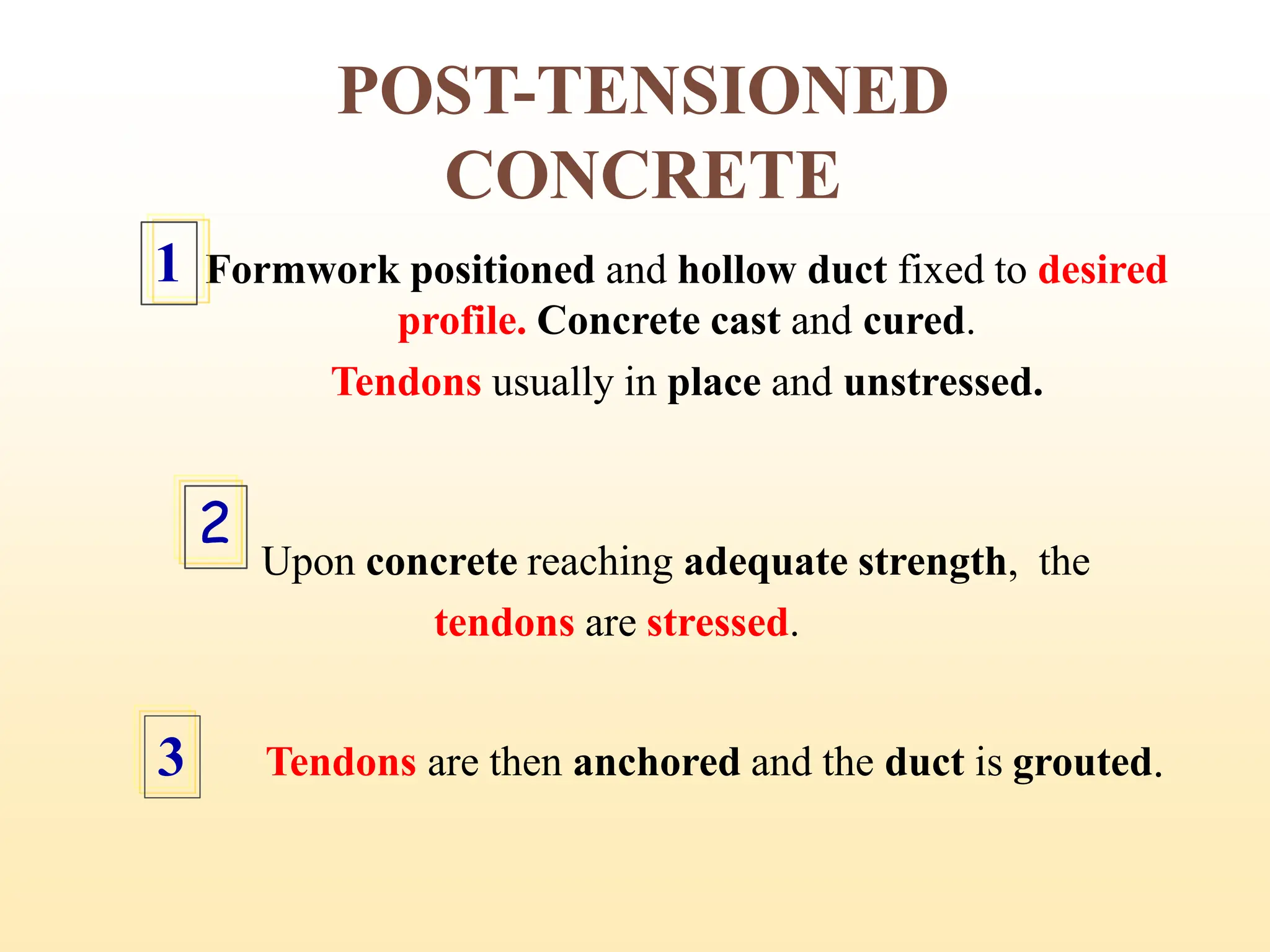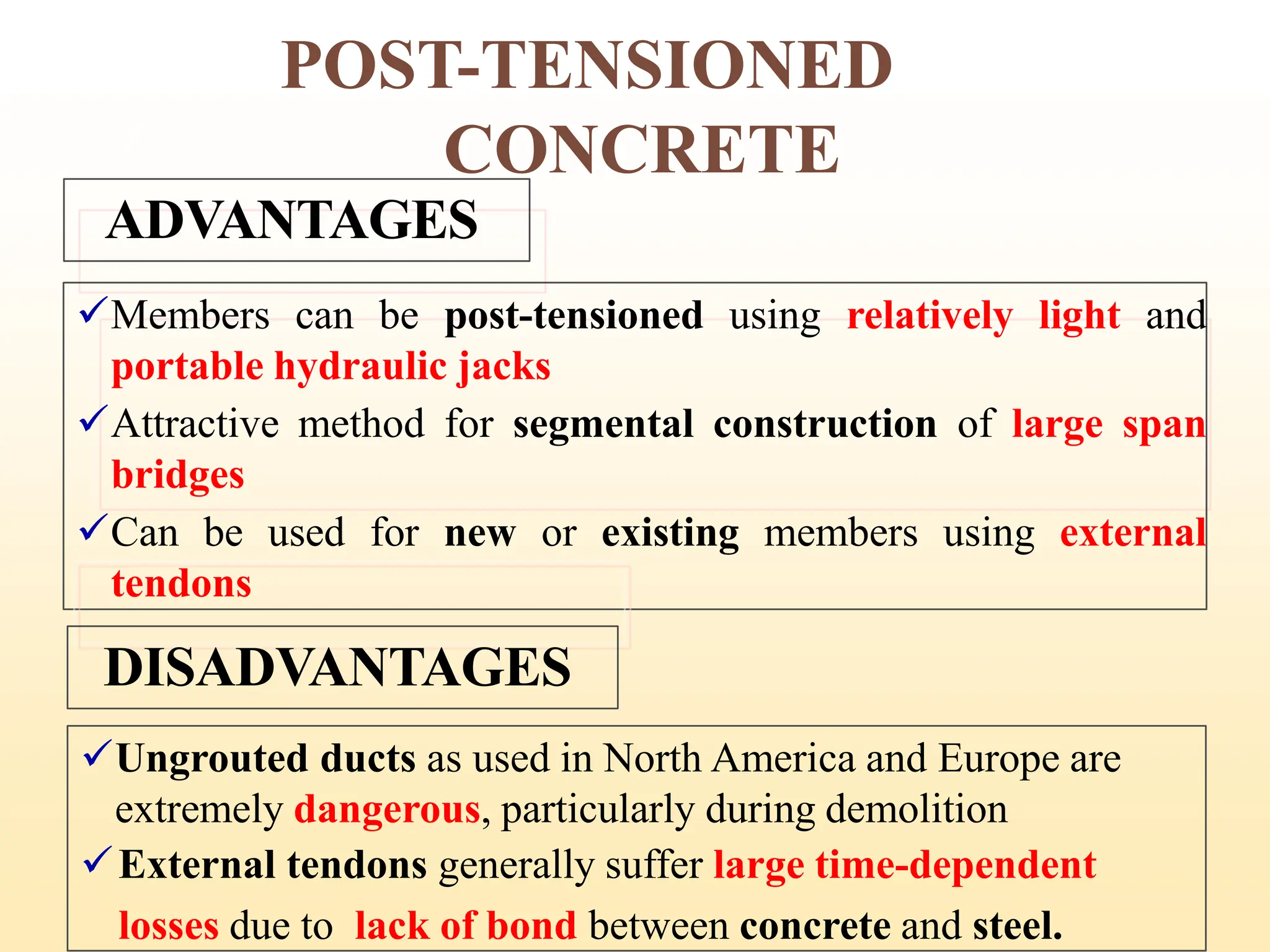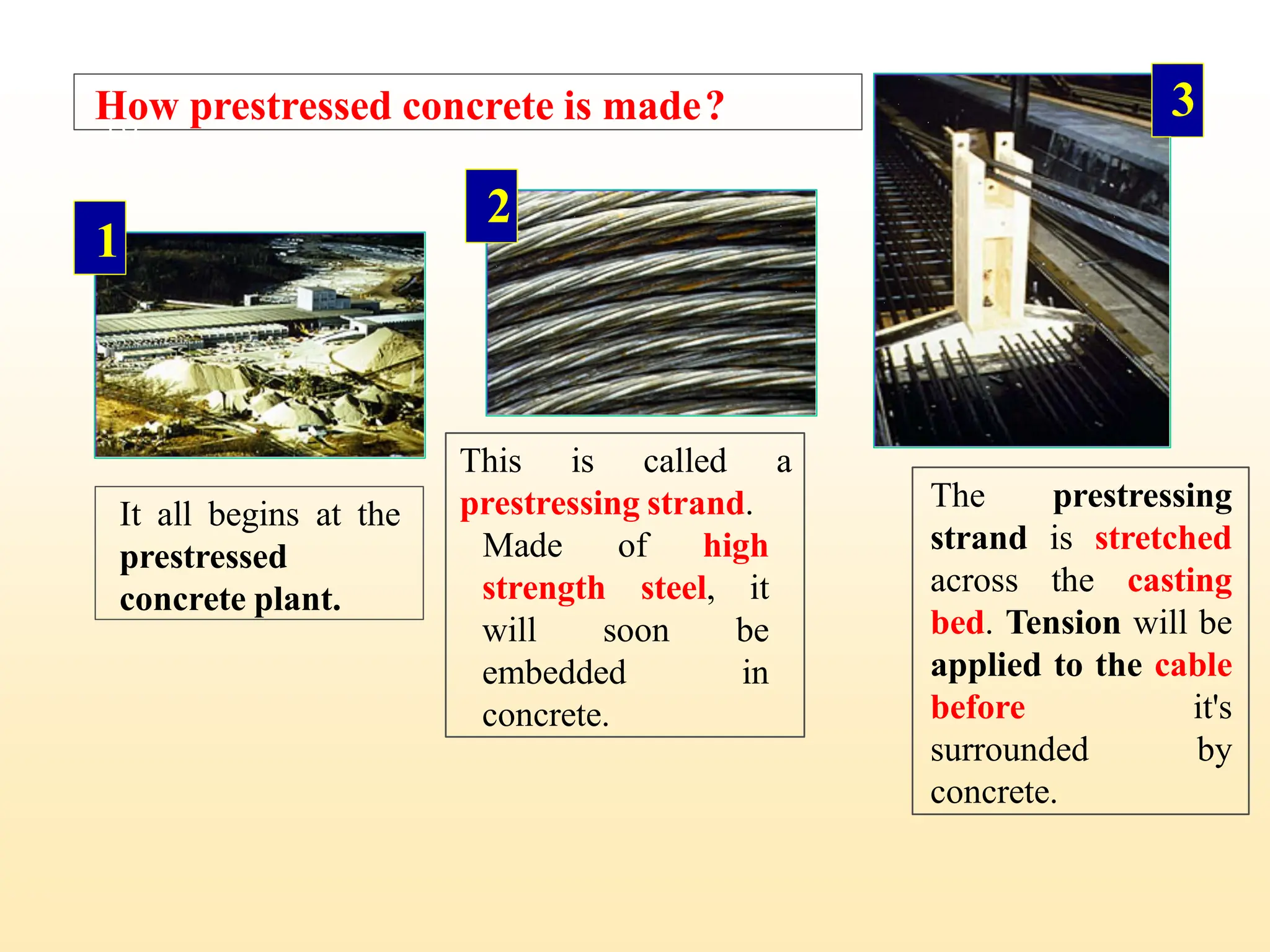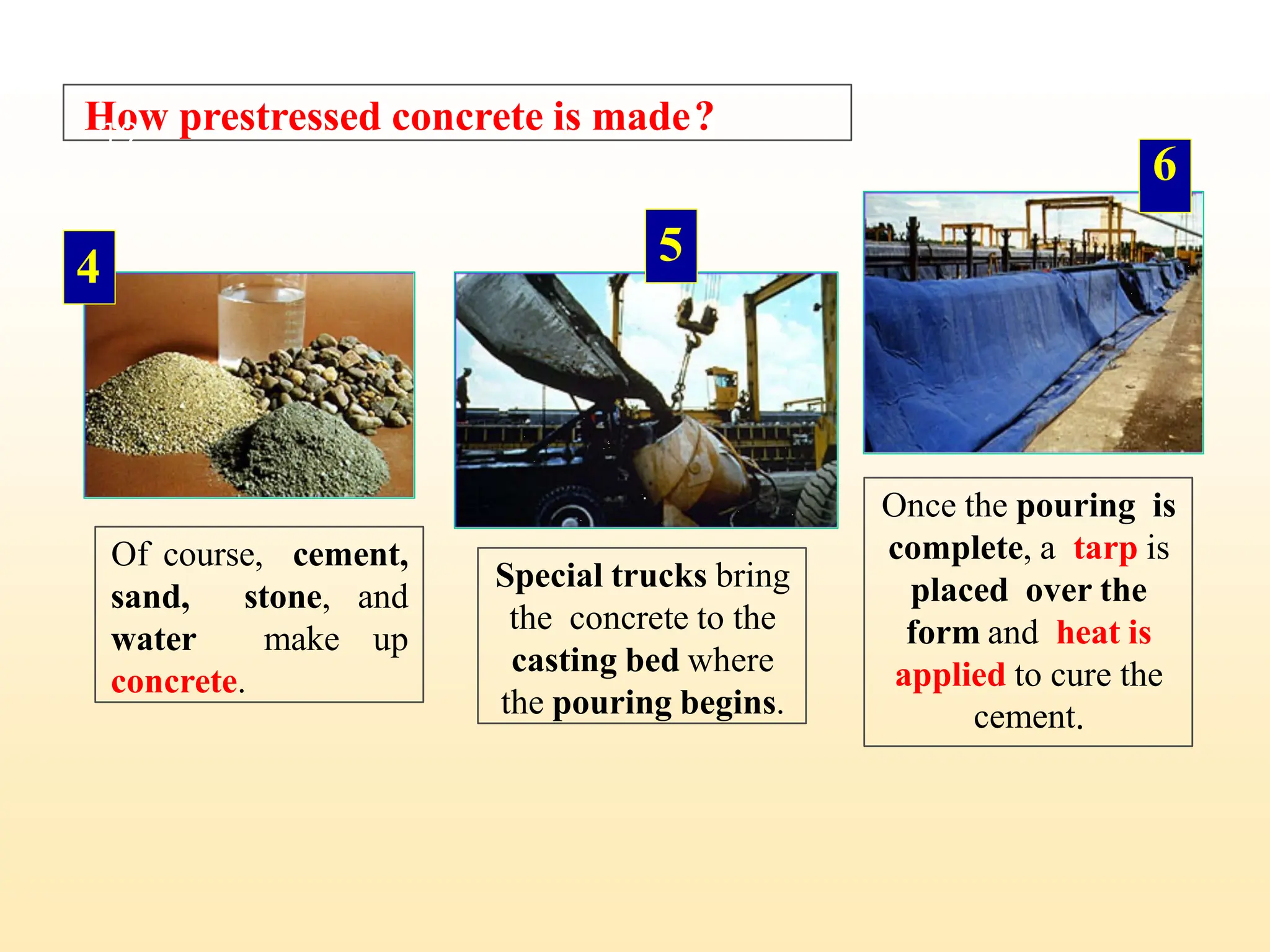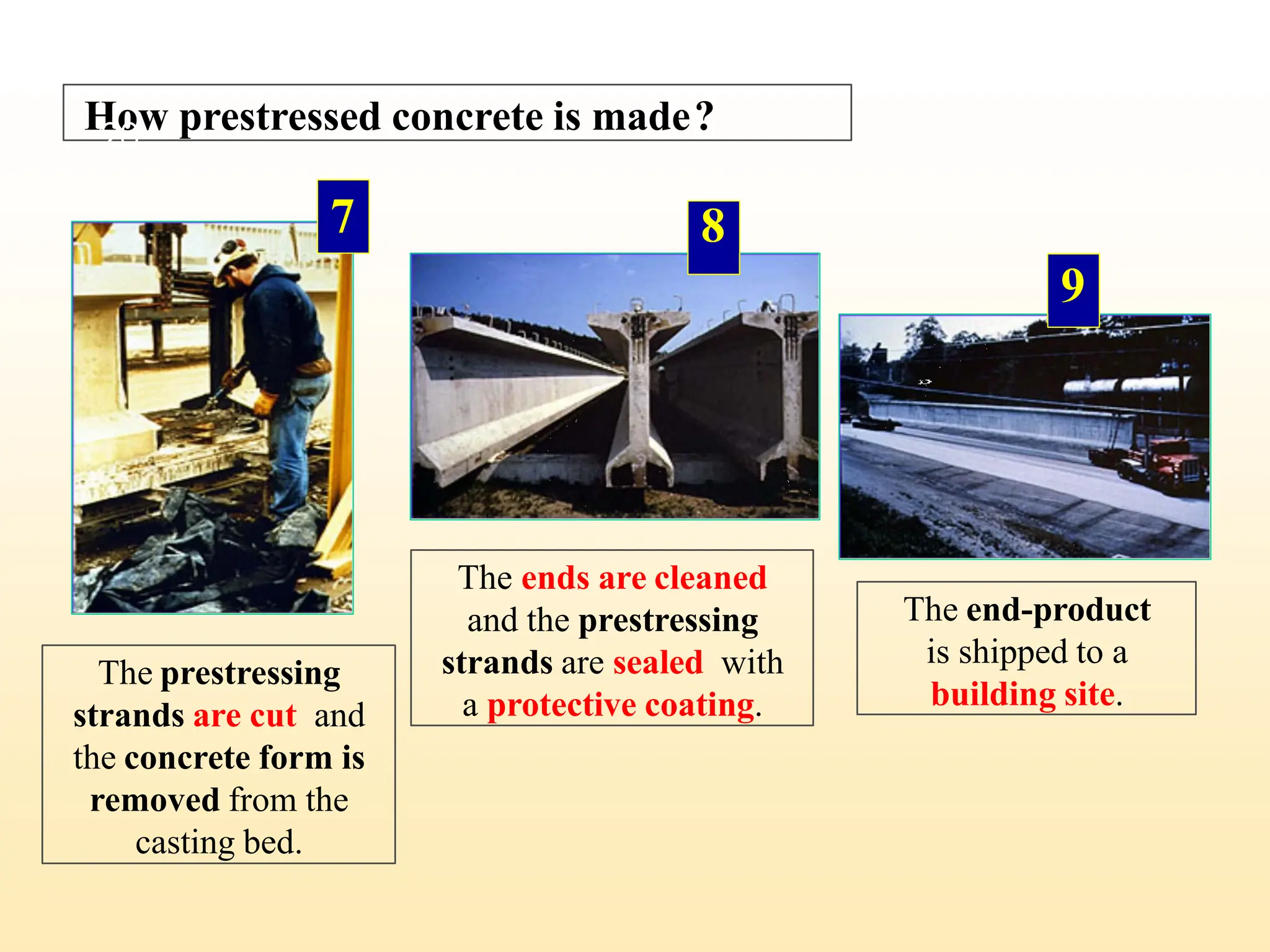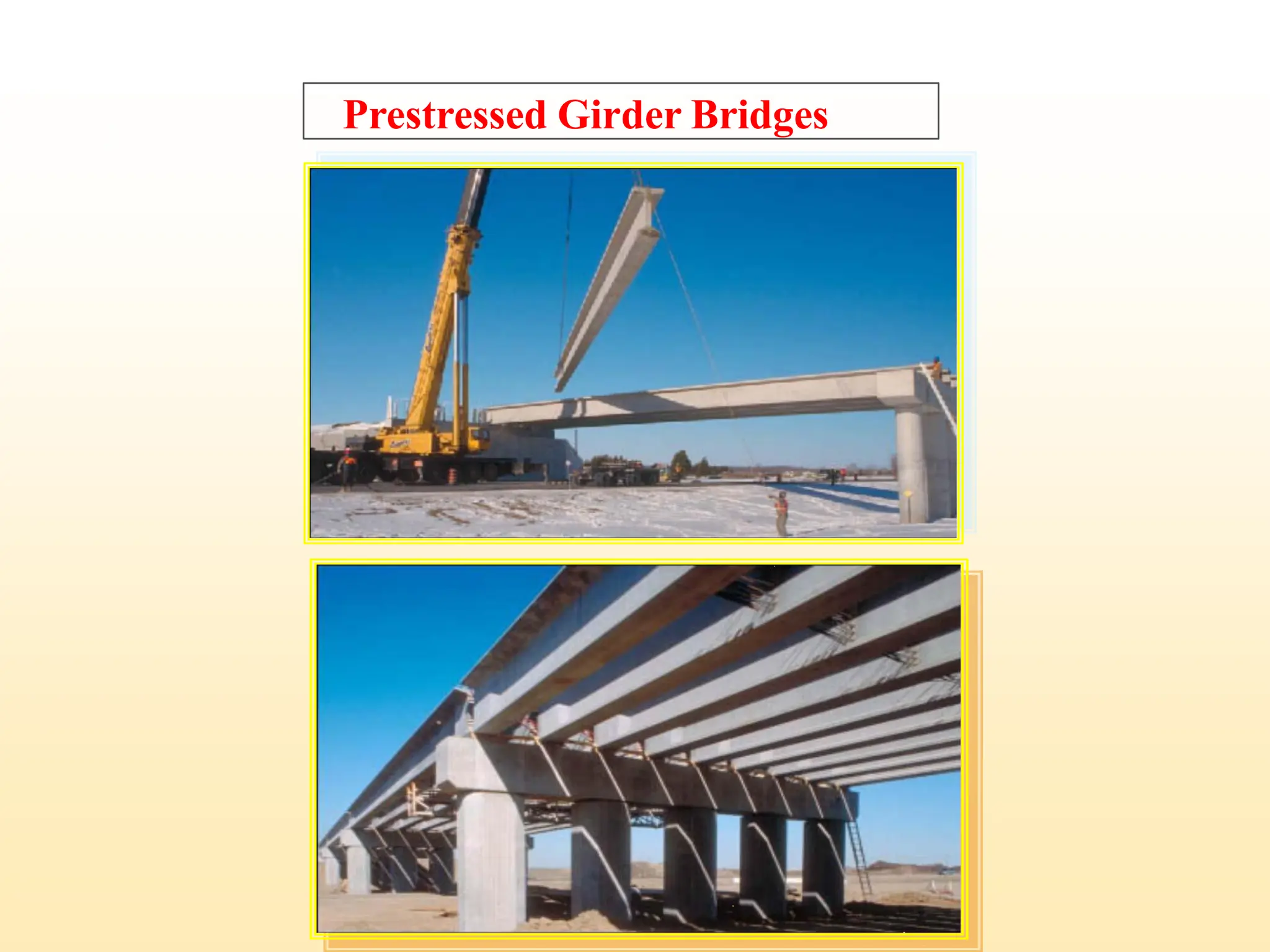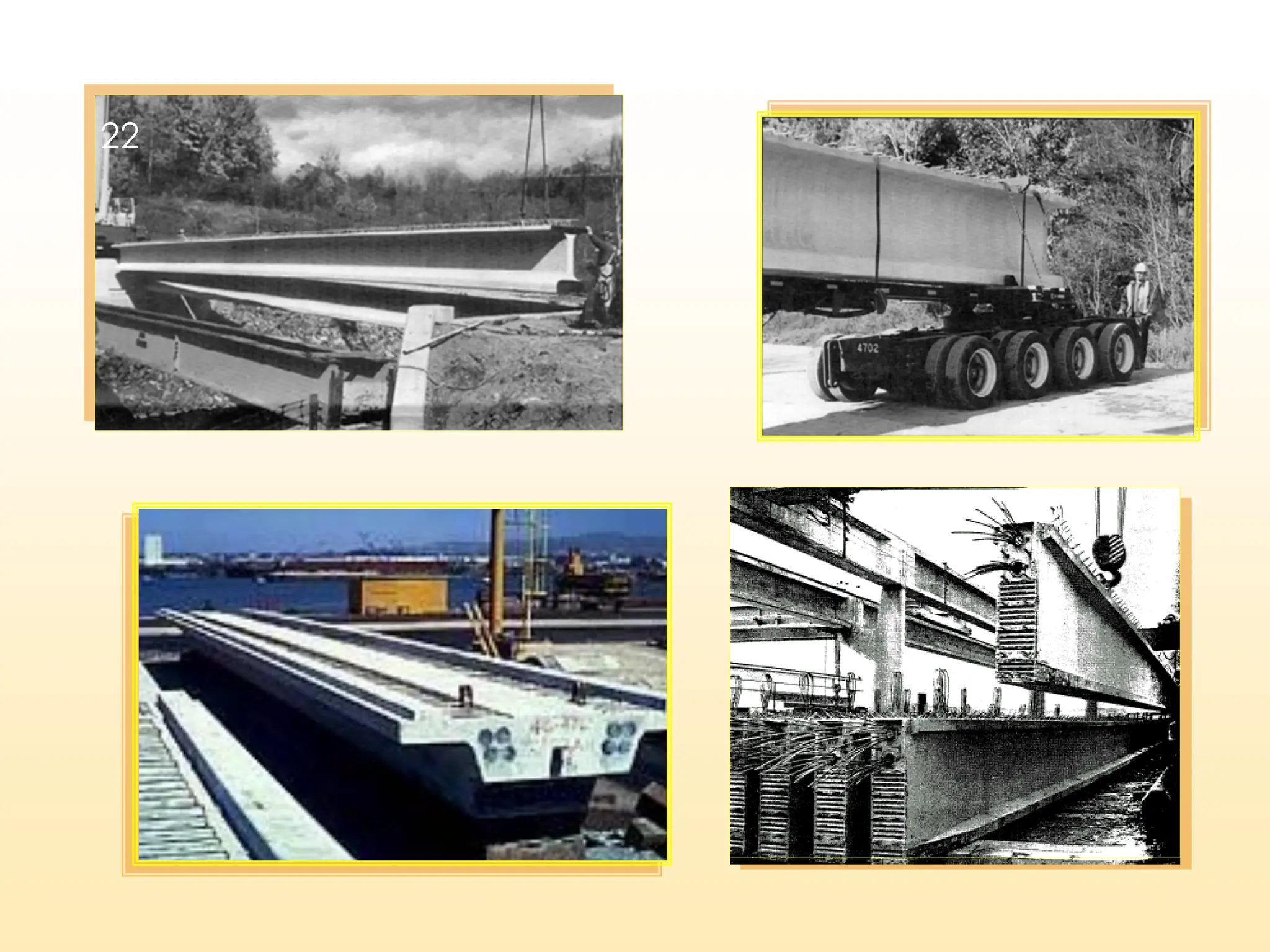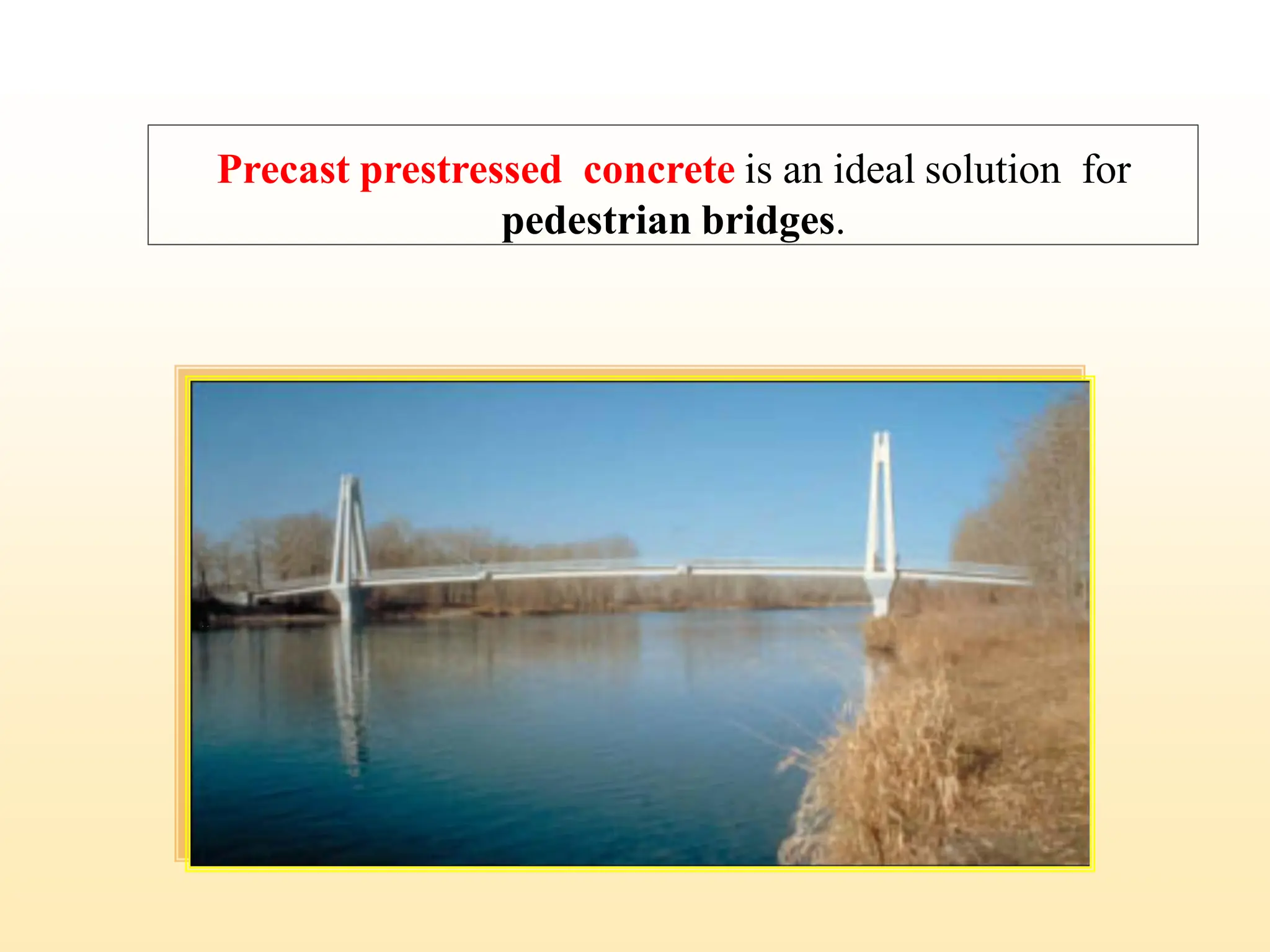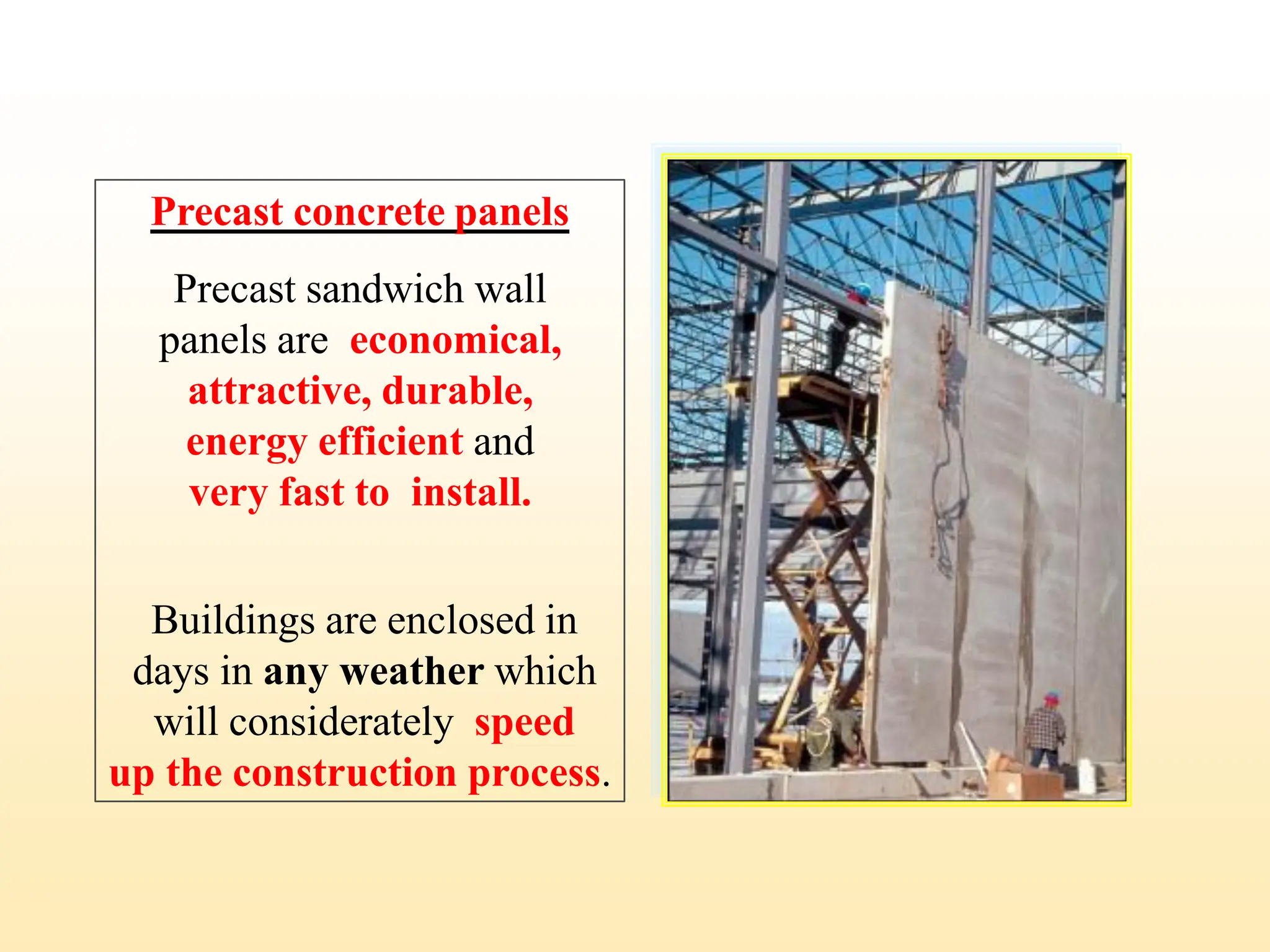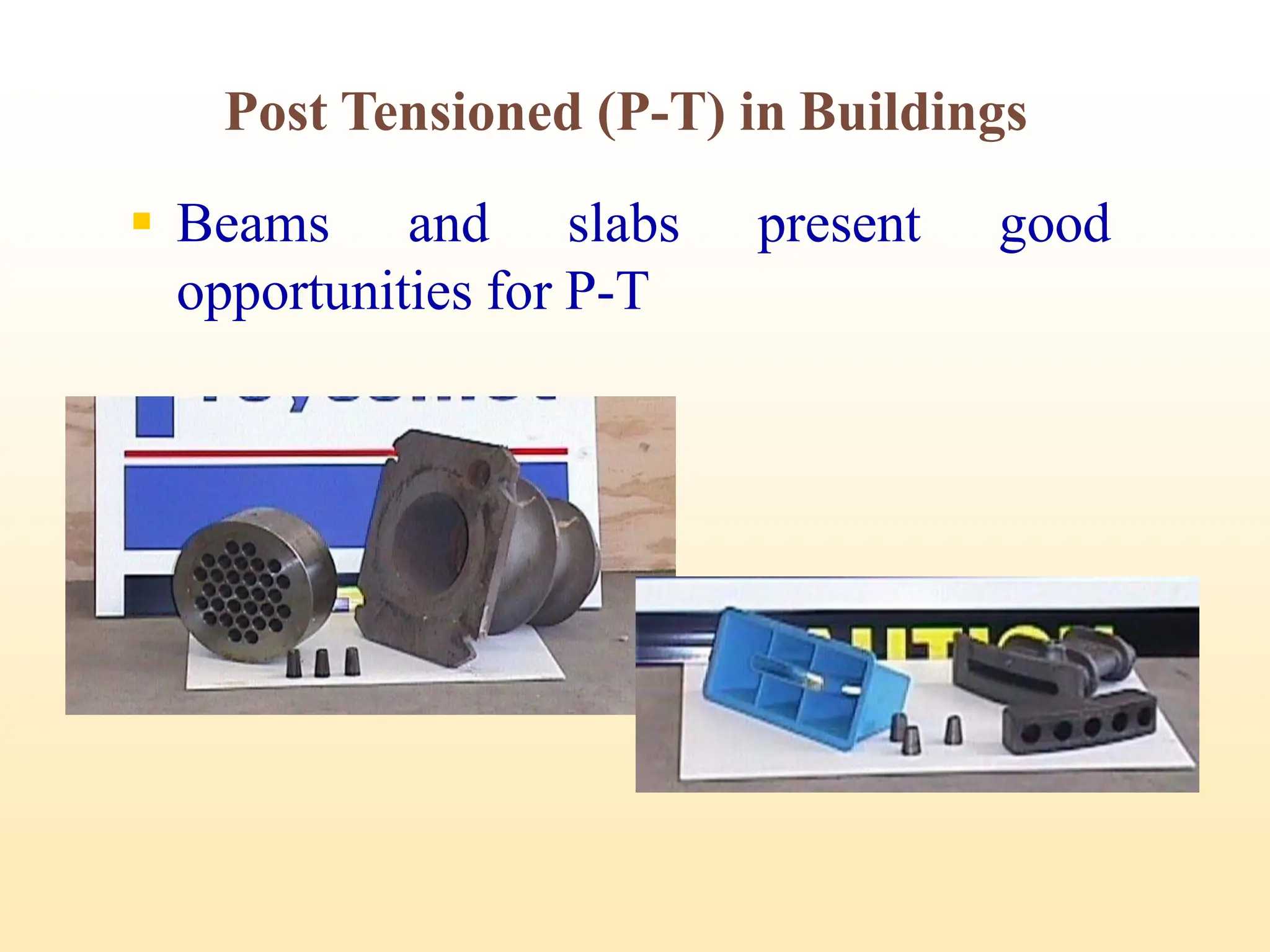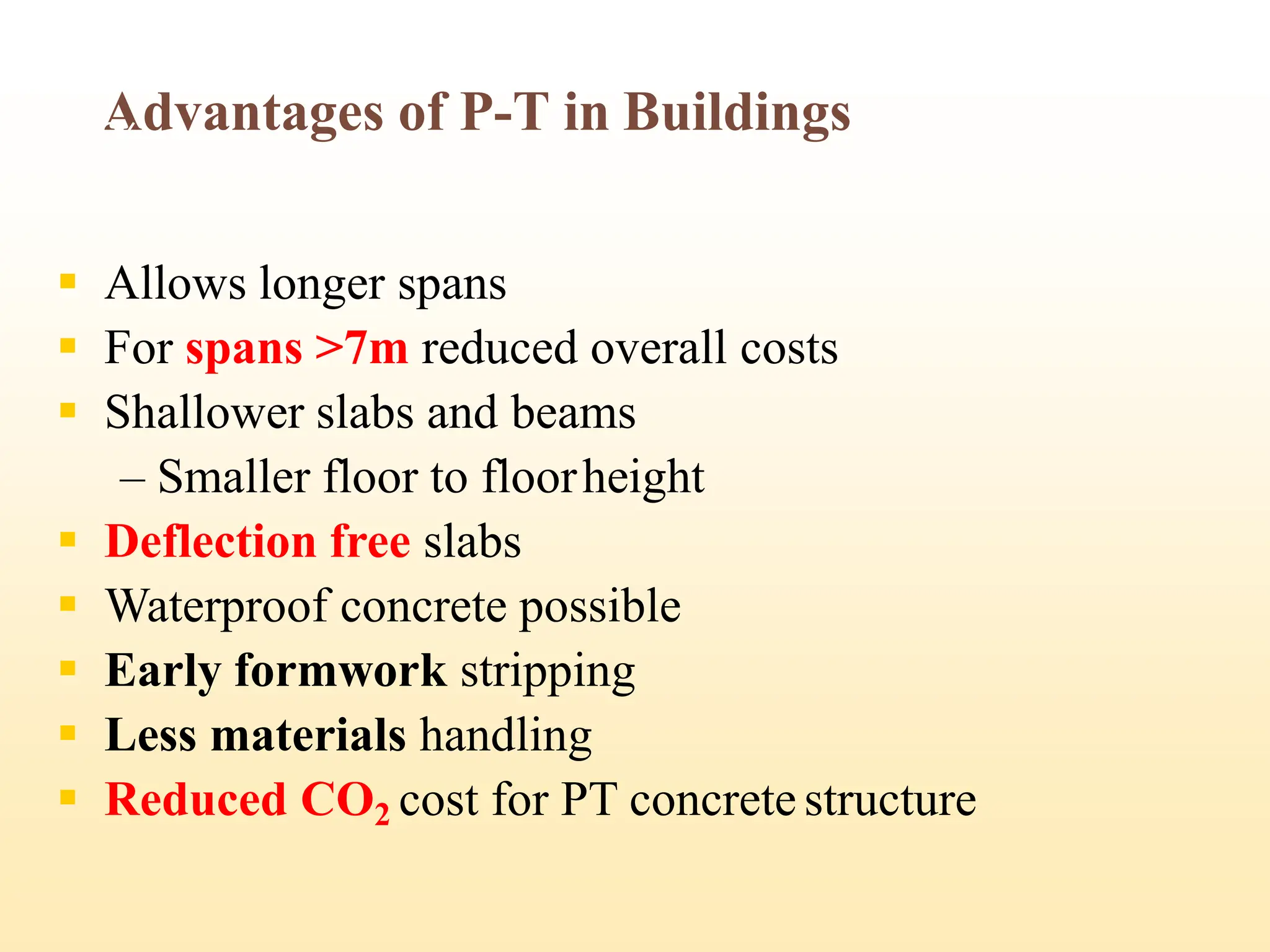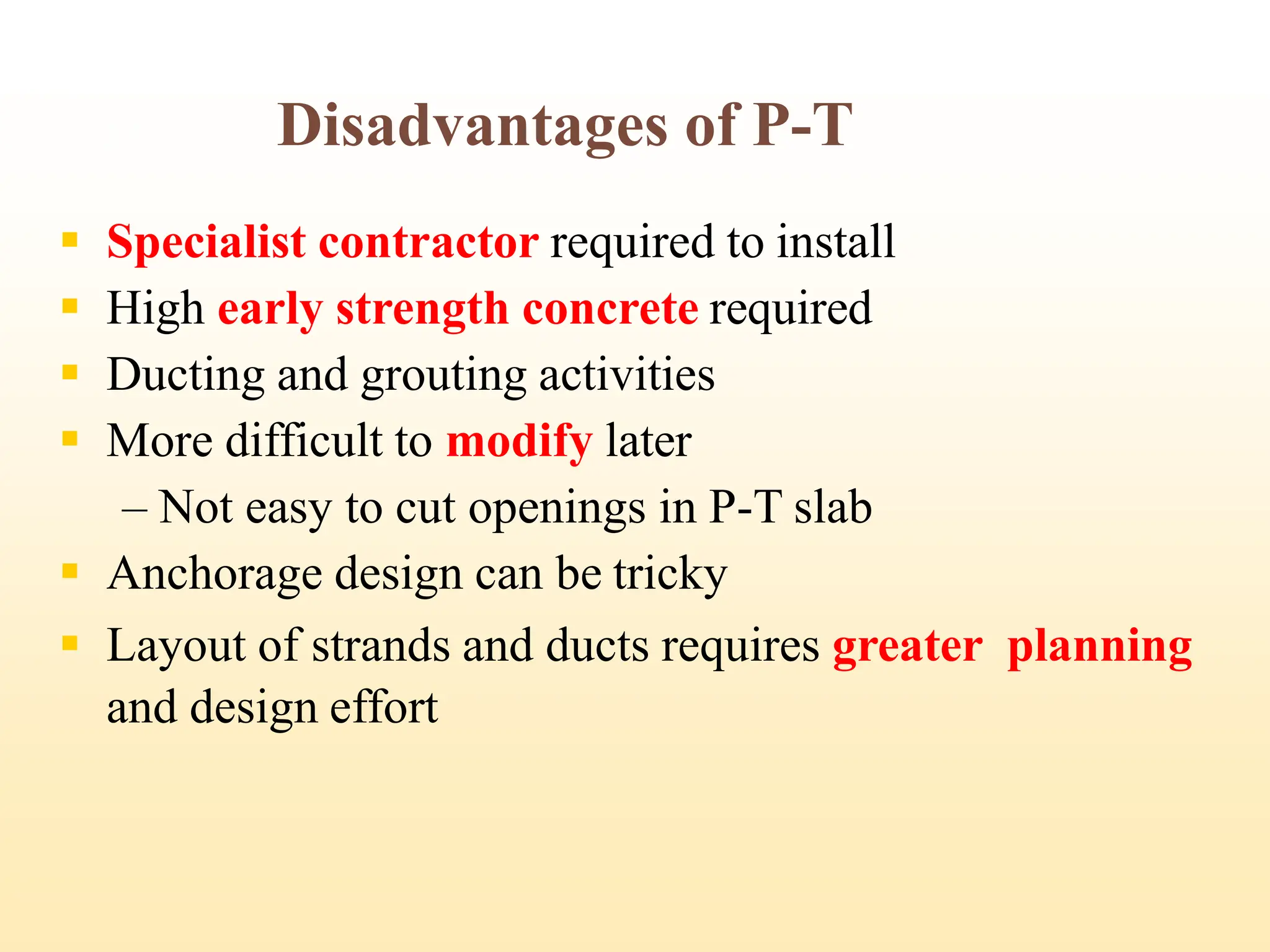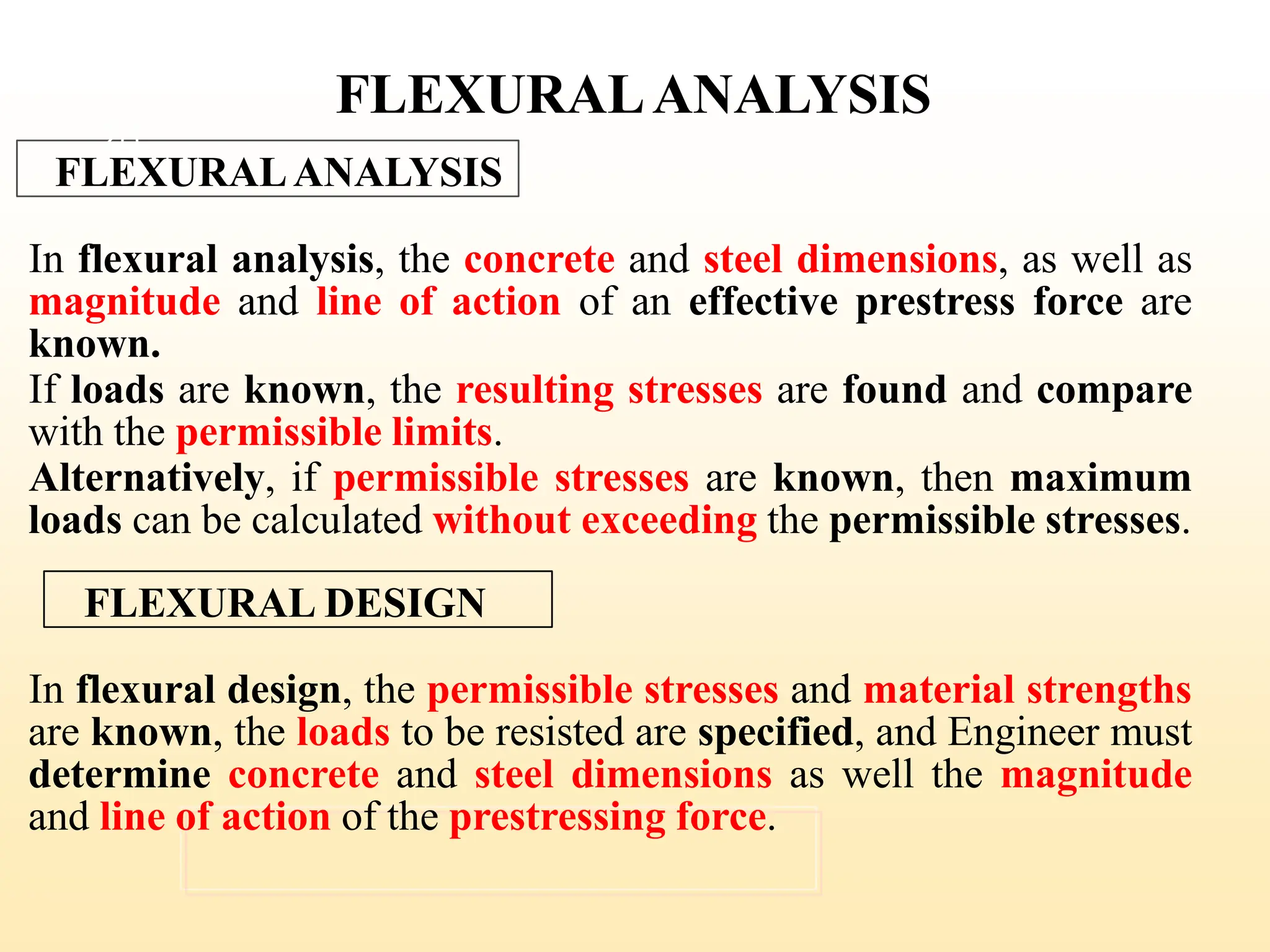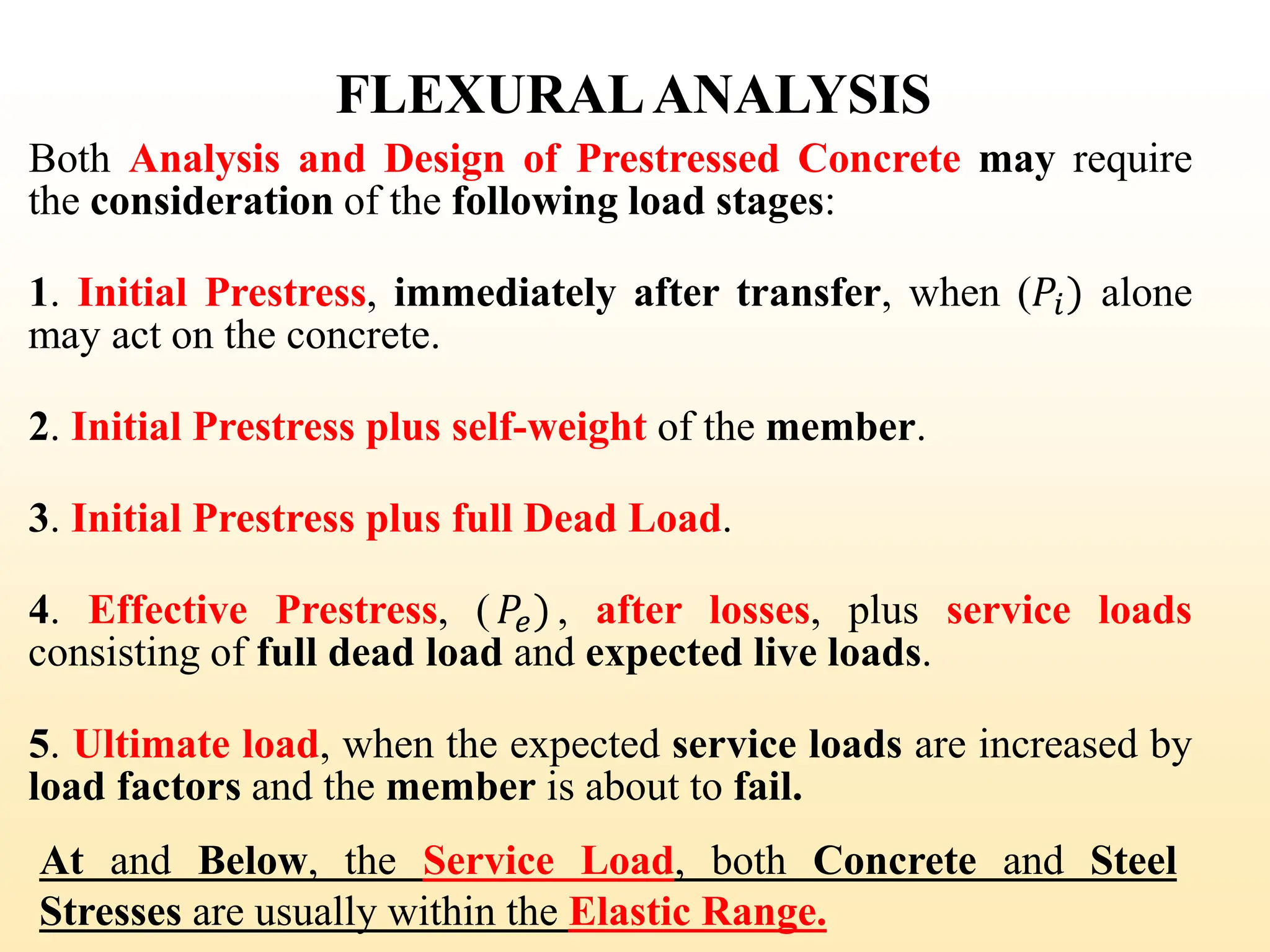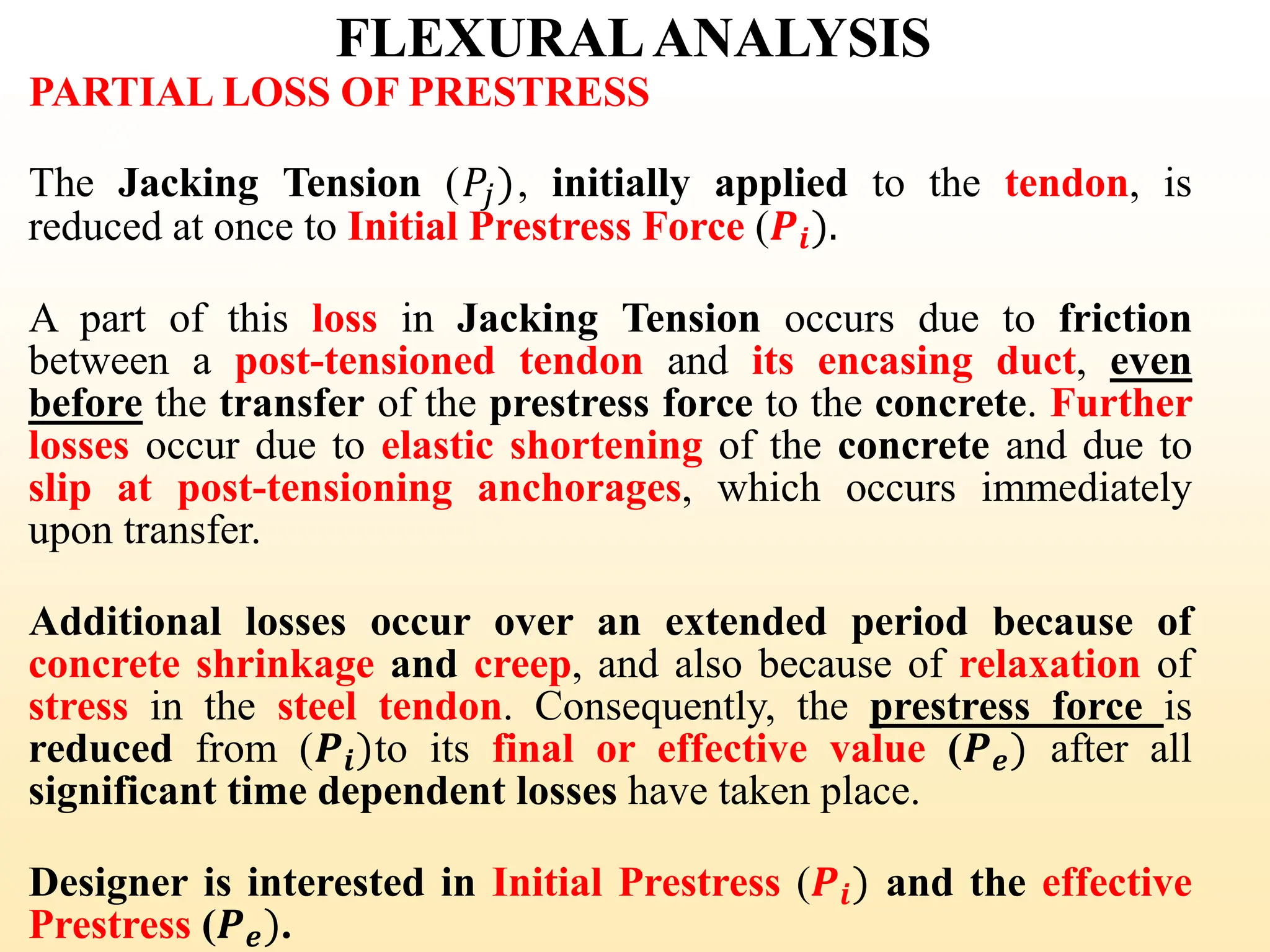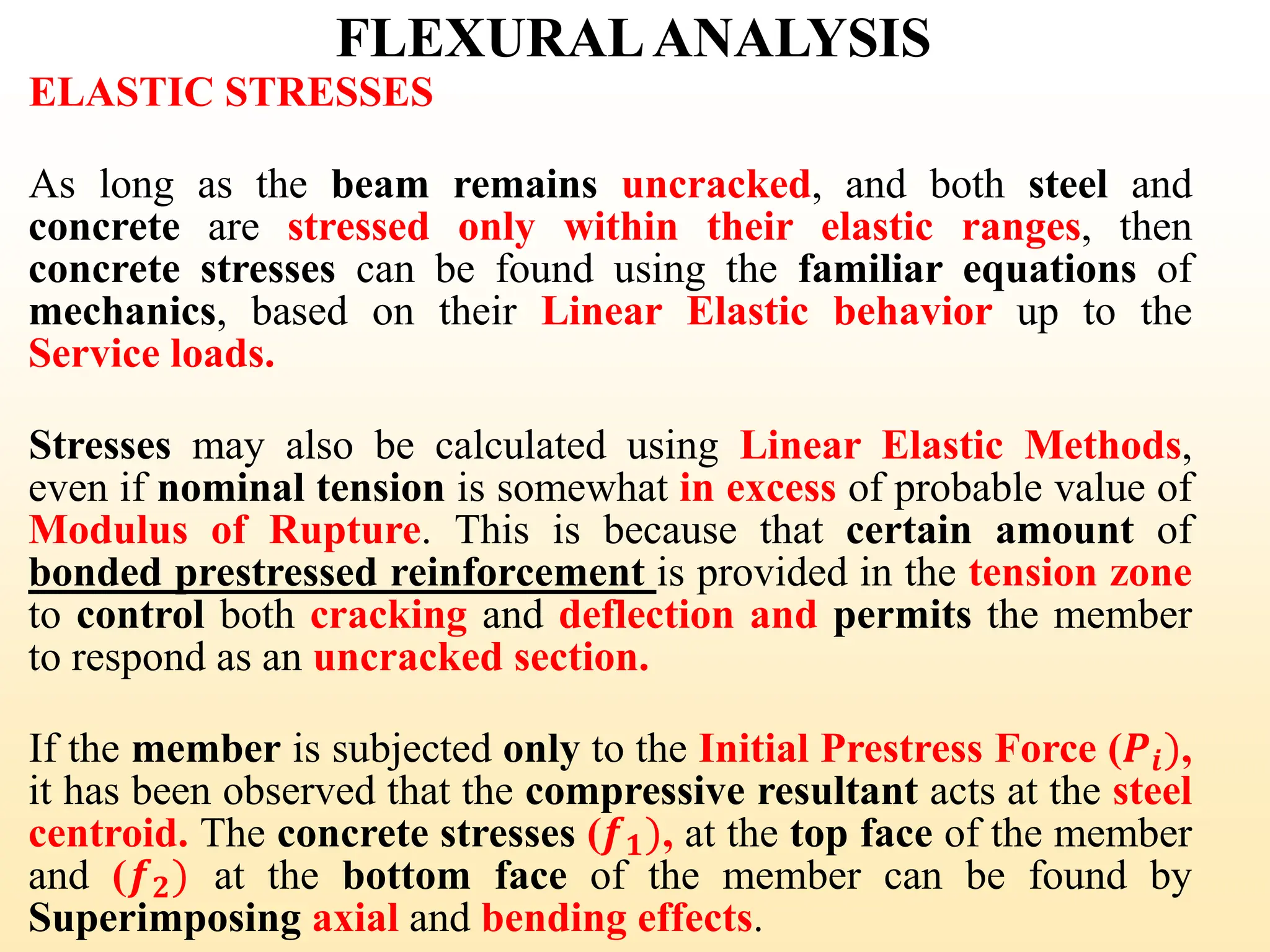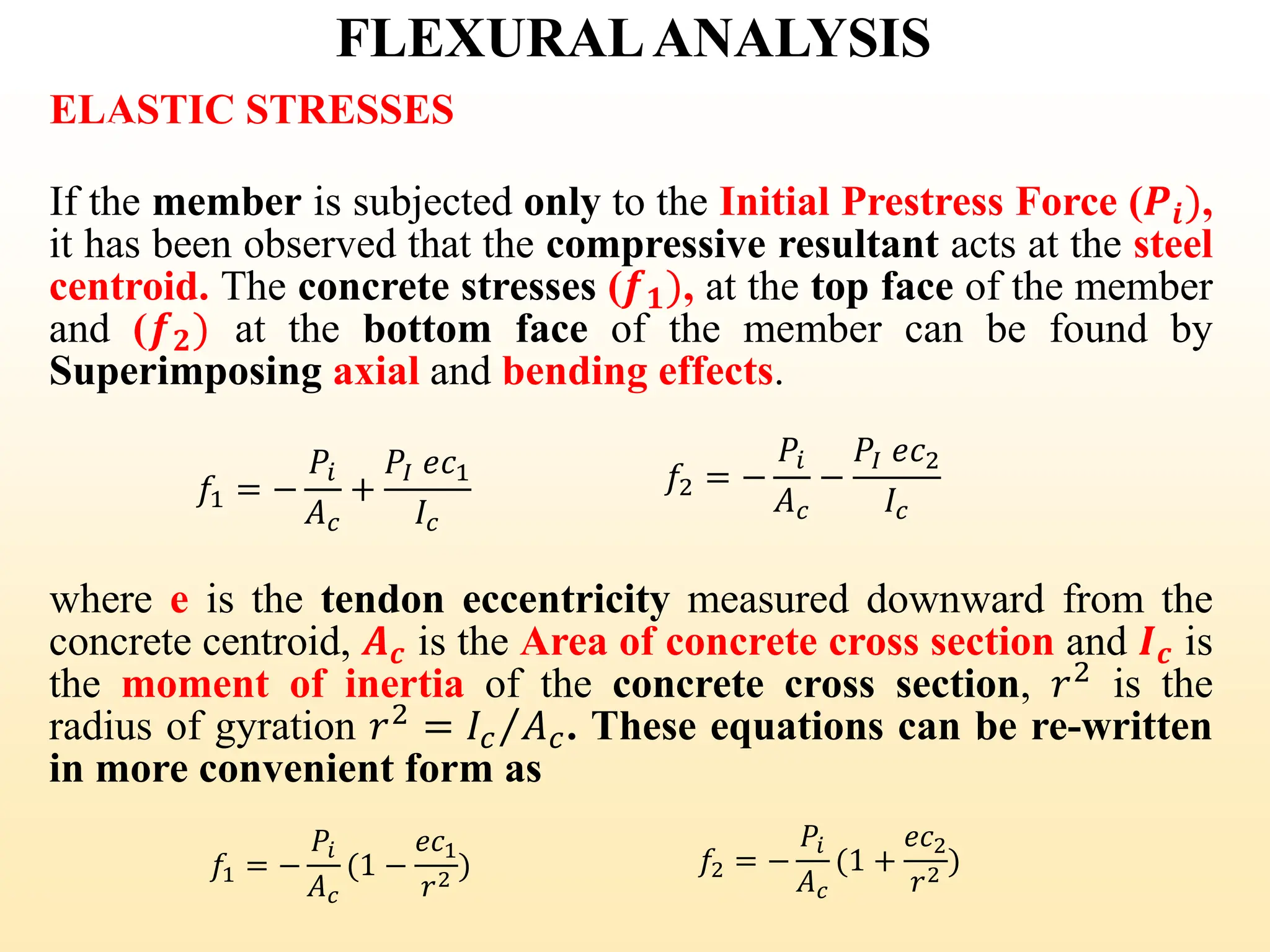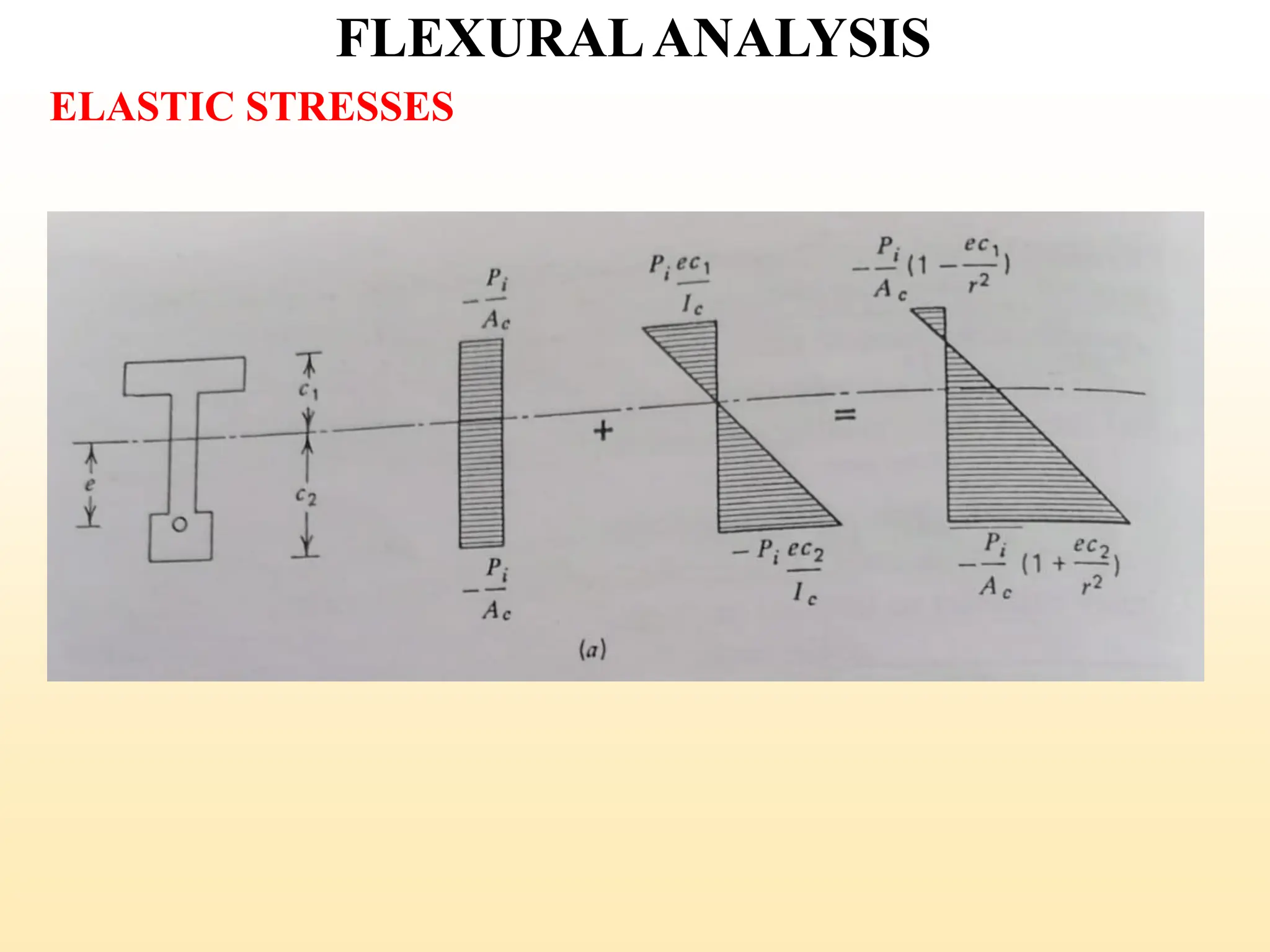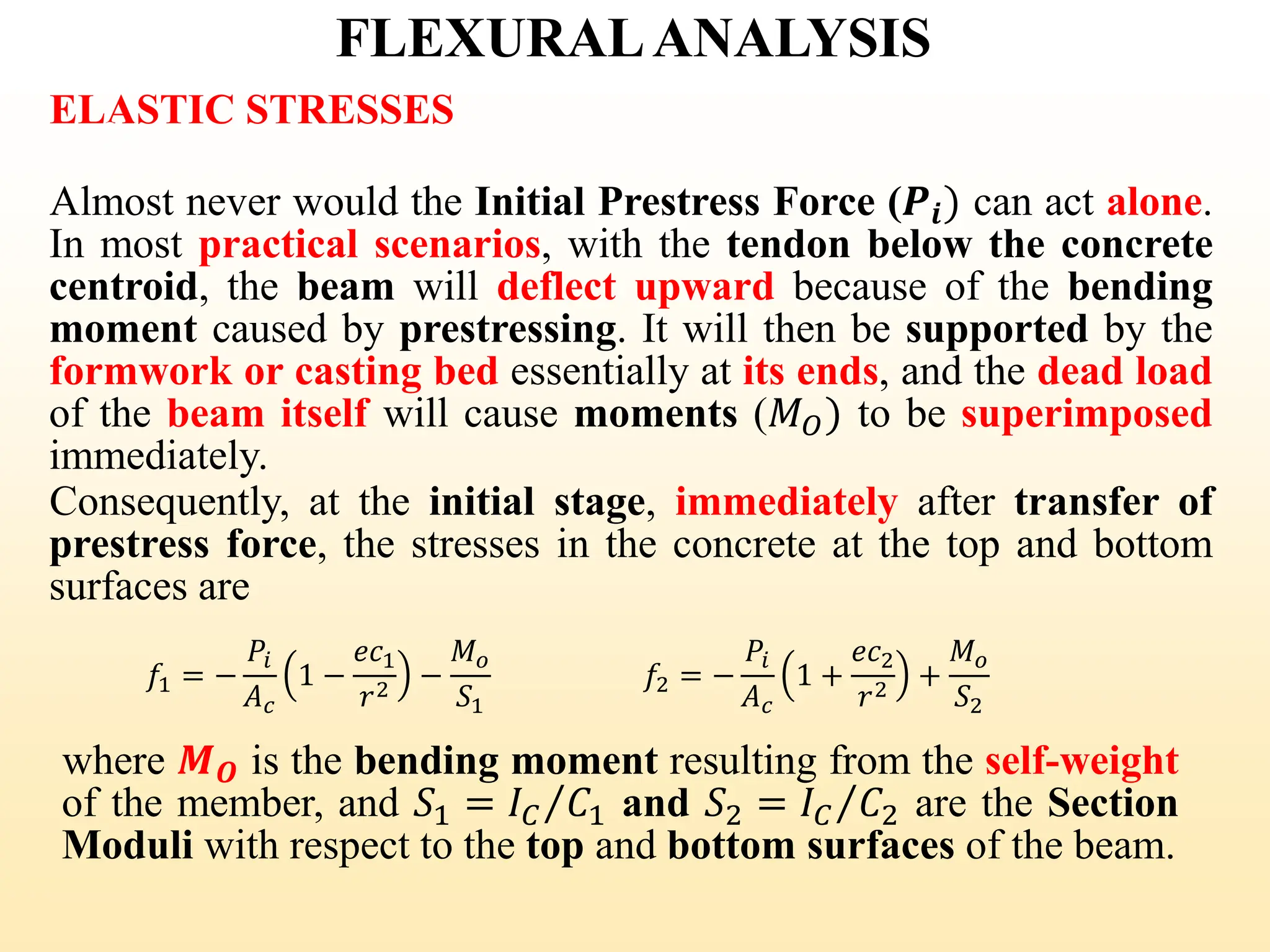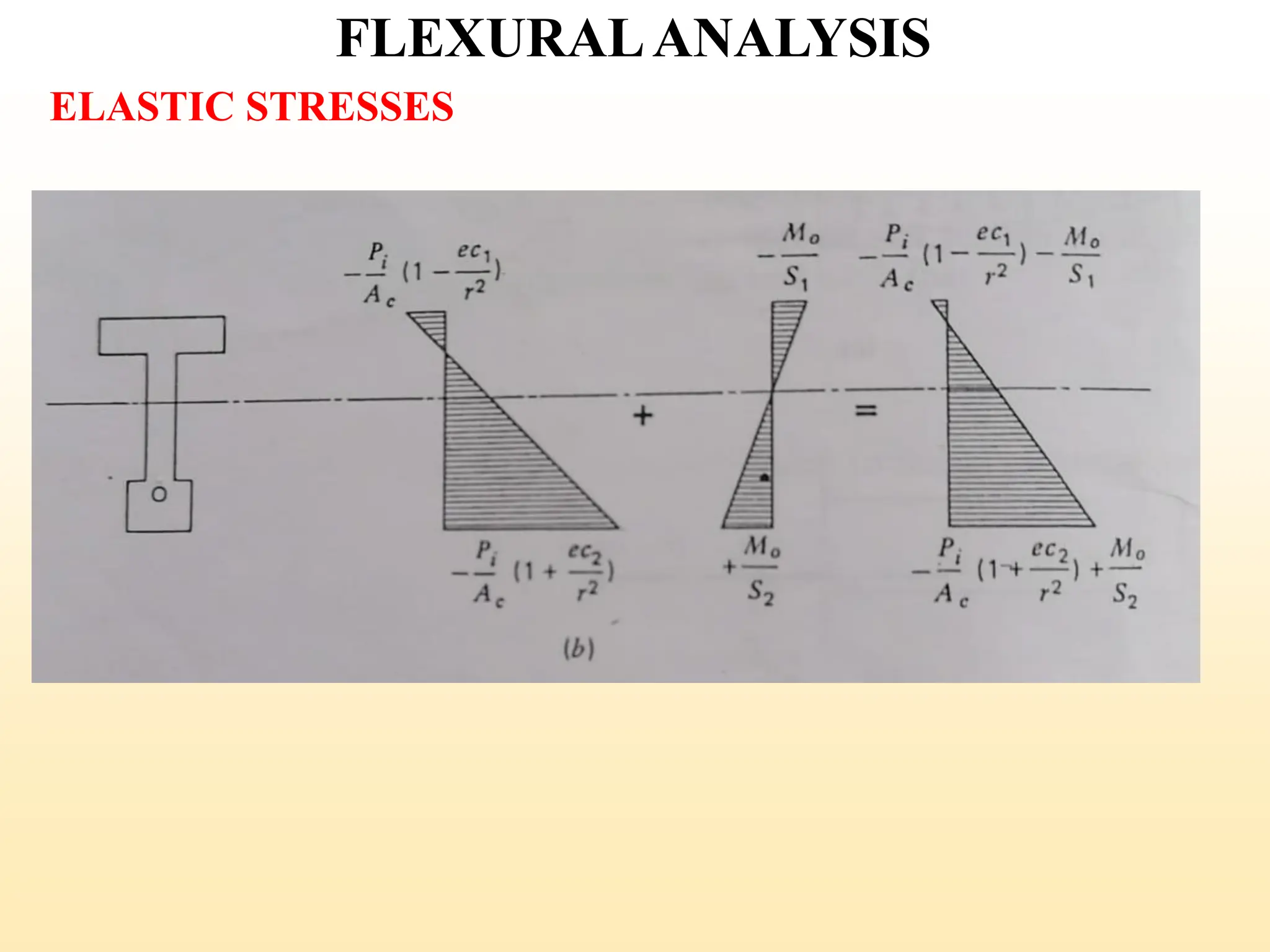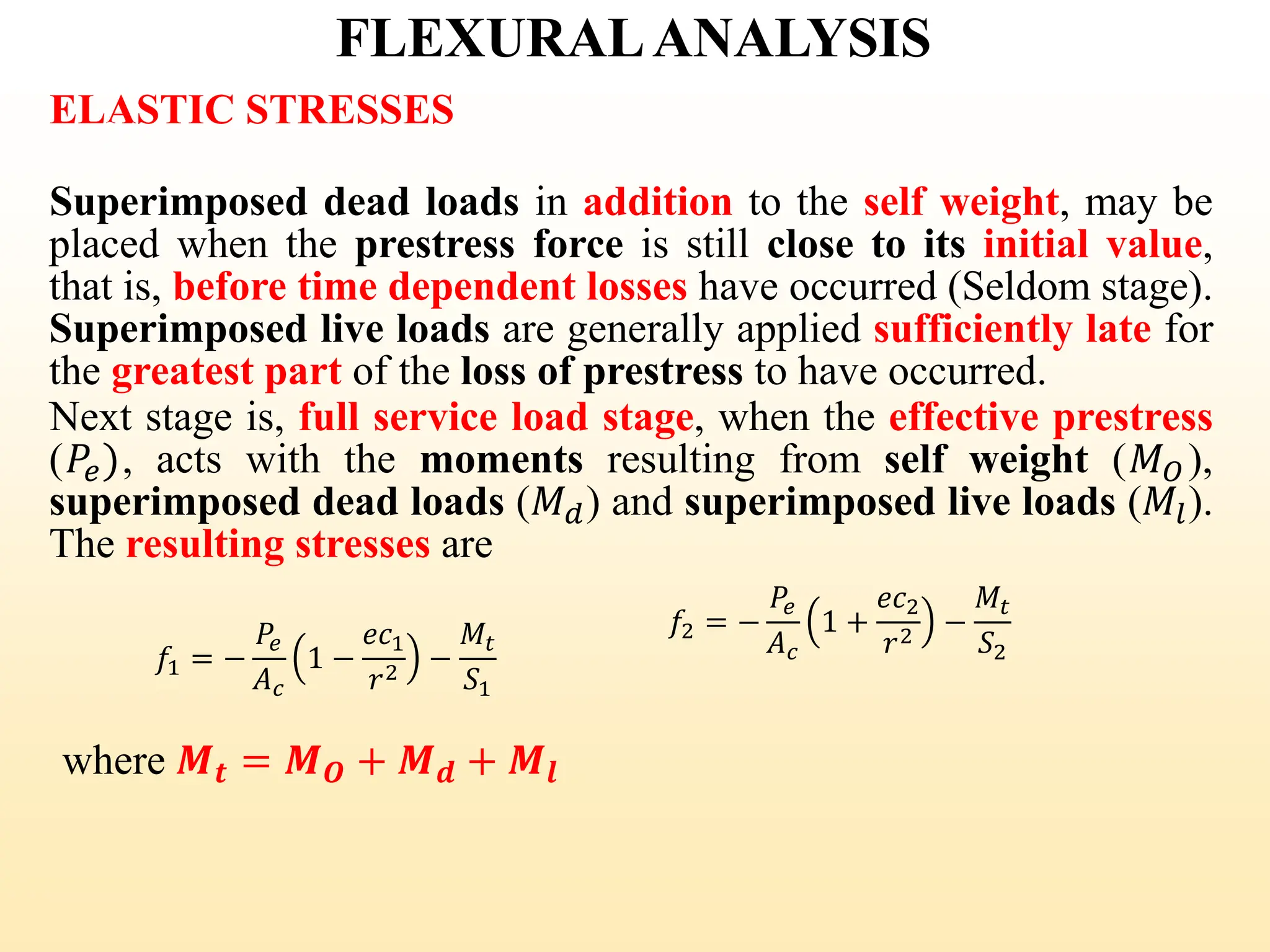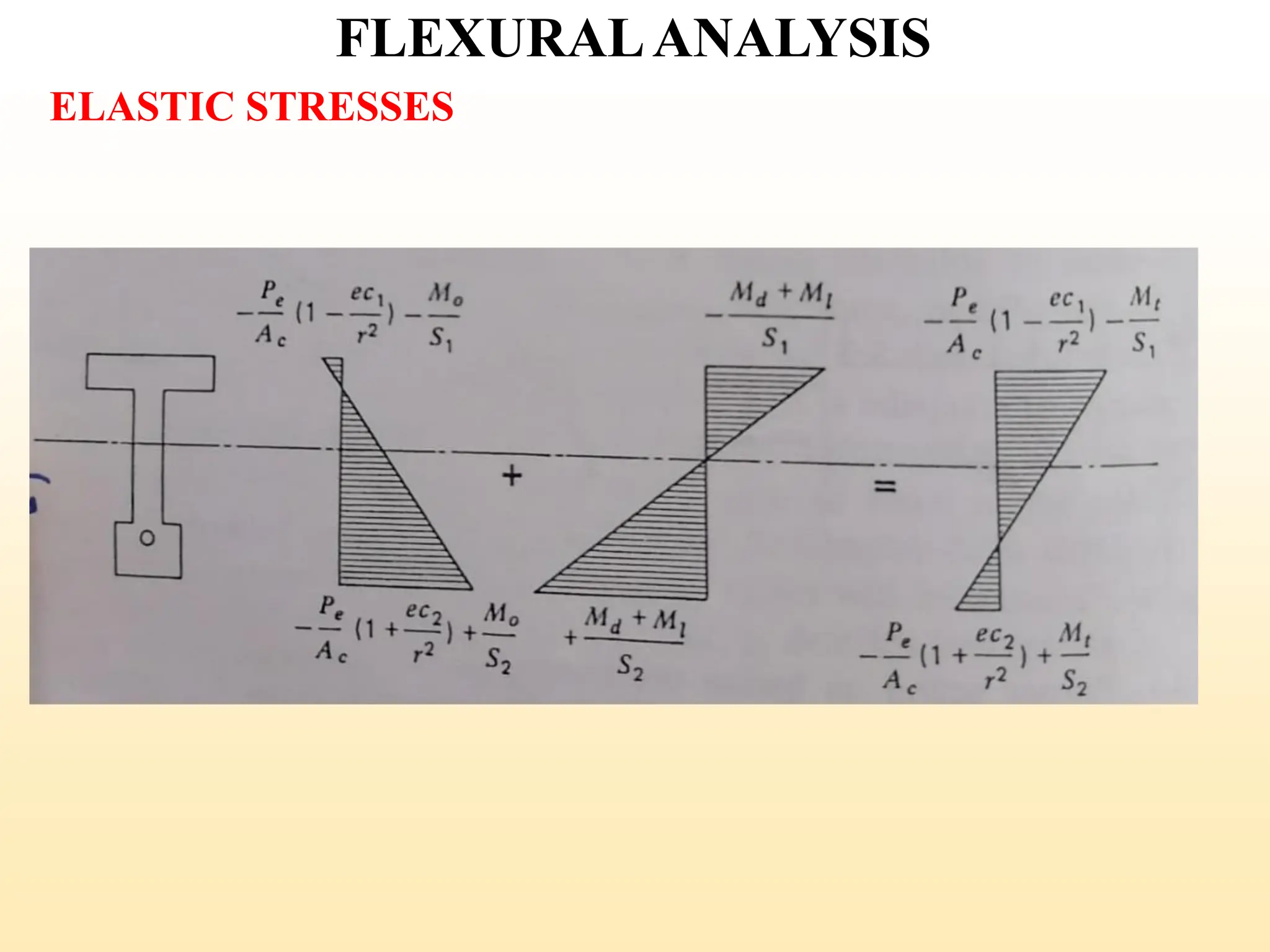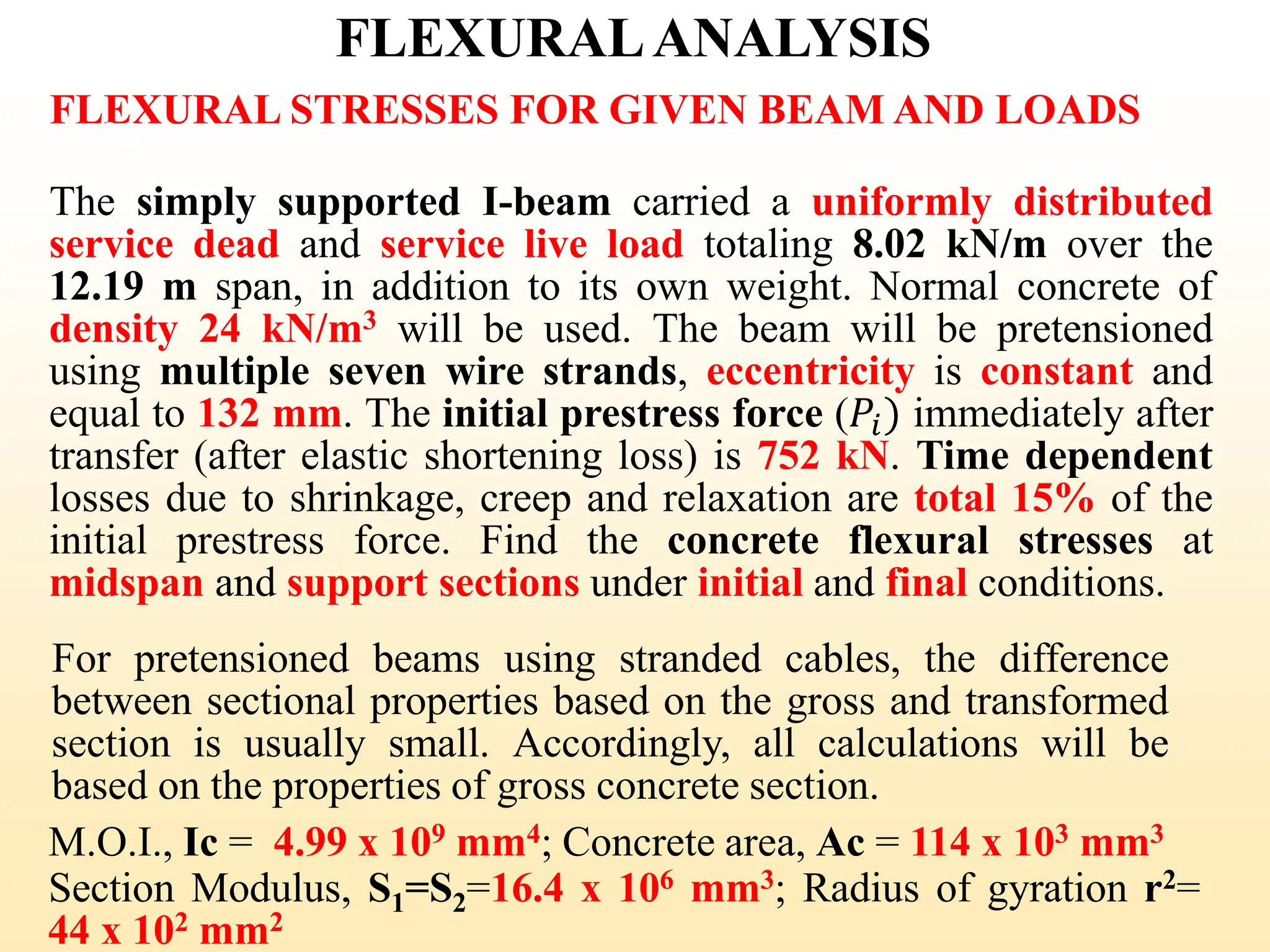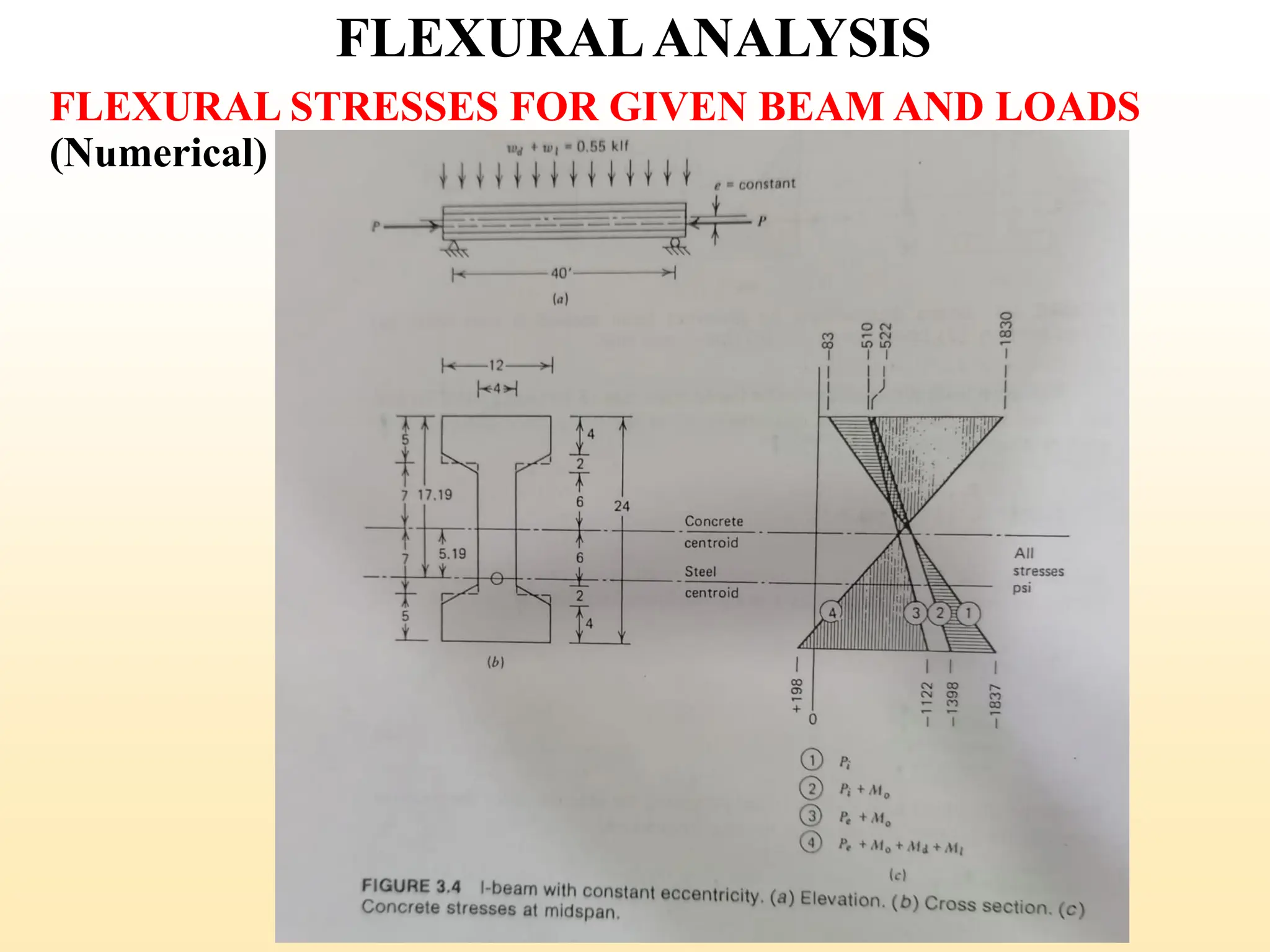This document provides an outline for lectures on prestressed concrete, including basic concepts, materials, flexural analysis, design considerations, shear/torsion, loss of prestress over time, composite beams, and deflections. Key points covered include how prestressing controls cracking by applying compressive stresses to concrete before service loads; common prestressing methods of pre-tensioning and post-tensioning; estimating stresses in uncracked concrete beams using elastic theory; and accounting for various load stages in analysis and design.

![1. Basic Concepts [Introduction, Stress Control by
Prestressing, Partial Prestressing, Prestressing Methods,
Changes in Prestress Force]
2. Materials [Introduction to High Strength Steel, Types of
Prestressing Steel, Stress-Strain Properties of Steel, Steel
Relaxation, Types of Concrete, Concrete in Uniaxial
Compression and Tension, Time dependent Deformation
of Concrete]
3. Flexural Analysis [Partial loss of Prestress Force, Elastic
Flexural Stresses in Uncracked Beams, Allowable
Flexural Stresses, Cracking Load, Flexural Strength
Analysis and ACI Design Equations, Partial Prestressing,
Elastic Flexural Stress after Cracking and Strength of
Partially Prestressed Beams]
LECTURE OUTLINE
2](https://image.slidesharecdn.com/1-basicsofprestressedconcrete-240315182453-f12c6d06/75/1-Basics-of-Prestressed-Concrete-pdforgs-2-2048.jpg)
![4. Flexural Design [Basis of Design, Flexural Design based on
Allowable Stresses, Shape Selection and Flexural Efficiency,
Load Balancing, Flexural design Based on Partial
Prestressing , Flexural Crack Control]
5. Shear and Torsion [Shear and Diagonal Tension in
Uncracked Beams, Diagonal Cracking Shear, Web
Reinforcement for Shear, Shear Design Criteria based on
ACI Criteria, Torsion in Concrete Structures, Torsion Design
of Prestressed Concrete]
6. Partial Loss of Prestress Force [Detailed Estimation of
Losses, Losses due to Friction, Anchorage Slip, Elastic
Shortening of Concrete, Creep and Shrinkage in Concrete,
Relaxation of Steel]
LECTURE OUTLINE
3](https://image.slidesharecdn.com/1-basicsofprestressedconcrete-240315182453-f12c6d06/75/1-Basics-of-Prestressed-Concrete-pdforgs-3-2048.jpg)
![7. Composite Beams [Types of Composite Construction, Load
Stages, Section Properties, Elastic Flexural Stresses, Flexural
Strength, Horizontal Shear Transfer, Shear and Diagonal
Tension]
8. Deflections [Basis for Calculations, Approximate Method
for Deflection Calculation, Deflection of Partially Prestressed
Beams, Allowable Deflections]
LECTURE OUTLINE
4](https://image.slidesharecdn.com/1-basicsofprestressedconcrete-240315182453-f12c6d06/75/1-Basics-of-Prestressed-Concrete-pdforgs-4-2048.jpg)
